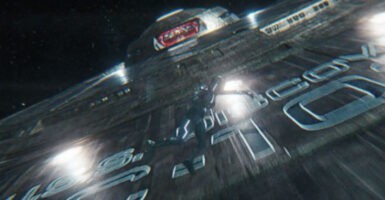Everything Star Trek Has Ever Done Ranked, Including Discovery
Star Trek II: The Wrath of Khan is the best thing Star Trek has ever done and a recent Star Trek series ranks as the worst. In the middle you'll find things like Star Trek cruises, which even at their worst still serve margaritas.
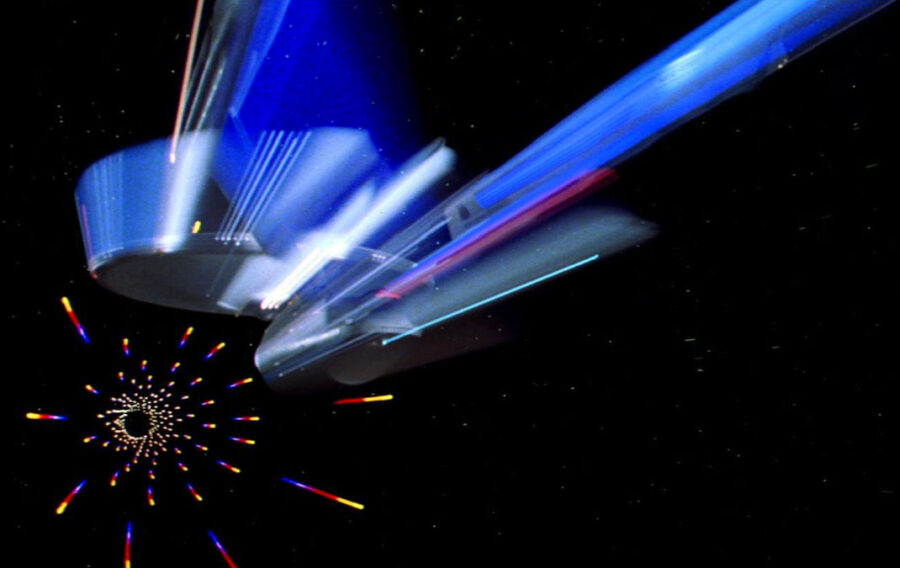
Star Trek has existed for more than fifty years and in that time it has been everywhere and done nearly everything. Much of it has been good. A lot of it has been in film and on television, but not all of it. The godfather of all franchises has become an indelible part of American culture and it pervades every aspect of our lives from toys to food, to vacations.
With so many things bearing the name Star Trek, which ranks as best? Which Trek ranks as the worst? We’ve got the answer here for you in our comprehensive, ultimate ranking of everything Star Trek has ever slapped its name on, for better or worse. Mostly for the better, we think.
Here it is in order. Everything Star Trek has ever done, ranked in one living document. Check back regularly to see how the list changes and grows over time as more Star Trek is released and old Star Trek ages.
Best Star Trek Movies
- 1. Star Trek II: The Wrath of Khan
- 2. Star Trek VI: The Undiscovered Country
- 6. Star Trek: First Contact
- 7. Star Trek III: The Search For Spock
- 8. Star Trek: The Motion Picture
- 10. Star Trek IV: The Voyage Home
- 11. Star Trek Beyond
- 16. Star Trek: Generations
- 17. Star Trek 2009
- 22. Star Trek V: The Final Frontier
- 23. Star Trek: Nemesis
- 25. Star Trek: Insurrection
- 31. Short Treks
- 34. Star Trek Into Darkness
Best Star Trek TV Shows
- 3. Star Trek: Deep Space Nine
- 4. Star Trek
- 5. Star Trek: The Next Generation
- 9. Star Trek: Picard Season 3
- 12. Star Trek: Lower Decks
- 13. Star Trek: Enterprise
- 14. Star Trek: Strange New Worlds
- 18. Star Trek: The Animated Series
- 19. Star Trek: Voyager
- 24. Star Trek: Prodigy
- 31. Short Treks
- 32. Very Short Treks
- 33. Star Trek: Picard Seasons 1 & 2
- 35. Star Trek: Discovery
1. Star Trek II: The Wrath of Khan
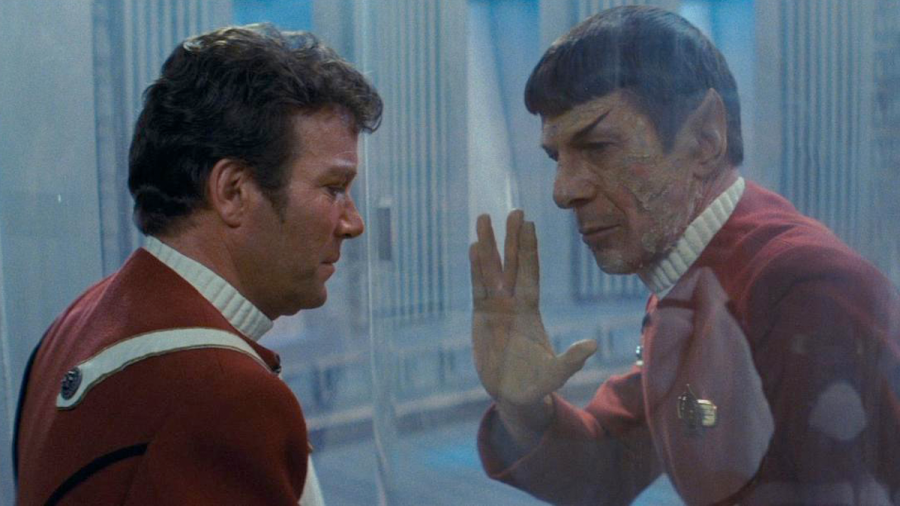
Wrath of Khan is the Star Trek thing most often held up as a shining beacon of what Trek can be at its best, for a reason. It really is that good. Wrath of Khan isn’t just a great Star Trek movie, it’s a great movie. The premise was wholly original and innovative and if it doesn’t seem that way now it’s only because so many other movies have tried to copy it, in the wake of its 1982 success. Every time you watch a movie with a strong villain character to balance out the hero, please know the movie you’re watching wants to be Wrath of Khan. But no one can be Wrath of Khan, because that formula will never be better than it is here, in its original incarnation.
Ricardo Montalban is one of the screen’s best villains of all time as Khan Noonien Singh. William Shatner delivers the second-best performance of his entire career (the best being in a movie we’ll get to later) and oh by the way, despite all the mockery Shatner is actually a very good actor, given the right material in the right situation. The ending is a gut punch, a heart-wrenching goodbye, and one that at the time left audiences sobbing. I still hear Scotty’s bagpipes in my head.
Wrath of Khan is more than just an adventure movie or a battle movie (though it is those things), it’s also about something. Director Nicholas Meyer made a movie about what it means to get old, about dealing with the fact that you aren’t the man you once were, a movie about regrets and facing the mistakes of your past. All the best Star Trek is about something but this one feels the most… human.
In the end, despite it all, Jim Kirk tells us “I feel… young.” And so does Wrath of Khan.
2. Star Trek VI: The Undiscovered Country
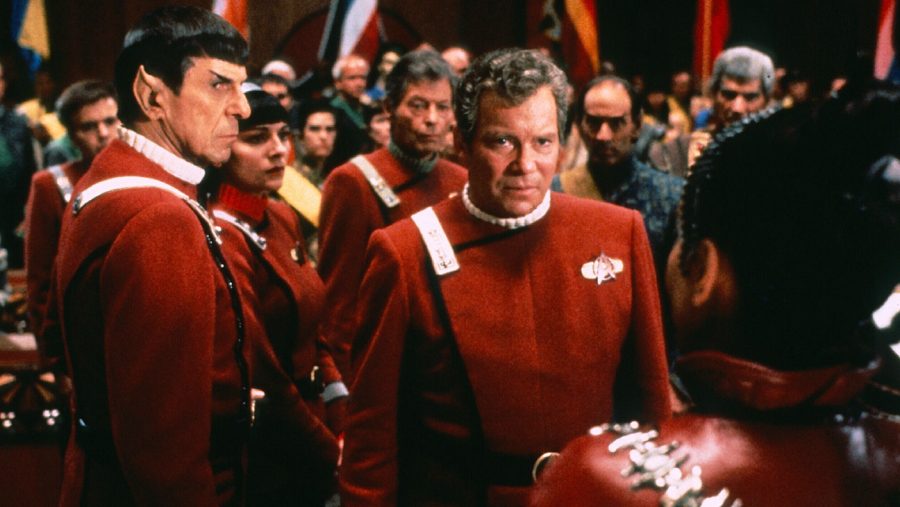
As an allegory for the cold war, The Undiscovered Country probably felt edgy and topical being released shortly after the fall of the Berlin wall in 1991. Today it’s only a great story well told, with elements of relevance weaved in as beloved characters grapple with their own personal prejudice in the face of a new world.
Outside of Worf (whose great-grandfather makes a cameo), this is the most complete look Star Trek ever gives us at the Klingons, both the good and the bad. As a bad, Christopher Plummer is one of the best bads Trek has ever had, spouting Shakespeare in both English and the original Klingon as the eyepatch-wearing General Chang. Cry havoc! And let slip the dogs of war.
Wrath of Khan is the better movie, but Undiscovered Country has many of Khan’s best elements while also being lighter and more fun. It’s a romp through the universe with our favorite characters, one last sendoff before they sail into the sunset. Second star to the right and straight on til’ morning.
3. Star Trek: Deep Space Nine
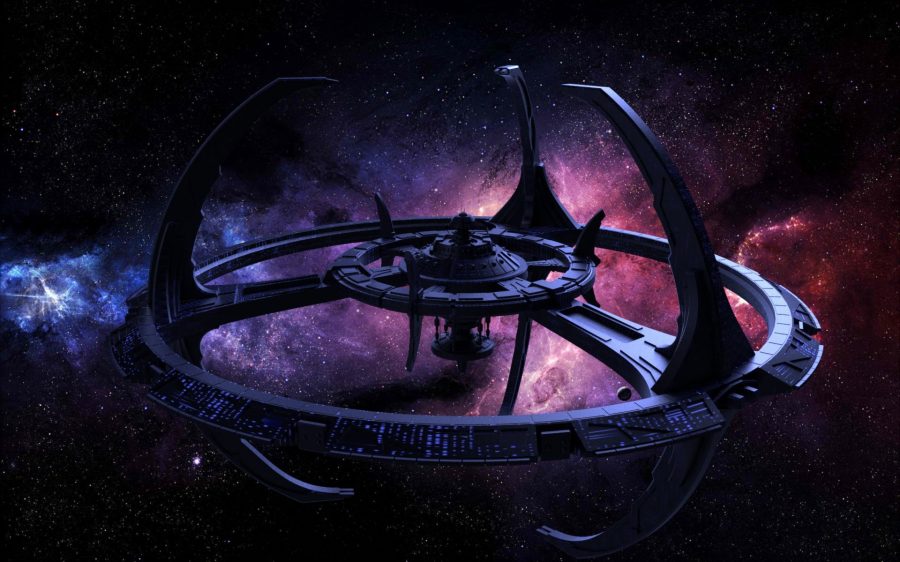
It’s especially appropriate that Deep Space Nine ranks right under the two best Star Trek movies on this list since this was the first (and last before Discovery) Star Trek series designed to play out like one long, seven-season movie. Back before linear storytelling was all the rage on television with shows like Game of Thrones and Breaking Bad, Star Trek: Deep Space Nine blazed a trail by being one of the first TV shows to tell one continuous story arc played out over multiple seasons.
It’s not number three on this list solely for its innovative method of storytelling, though. The stories DS9 told were top-notch, thoughtful science fiction as it tackled the reality of Gene Roddenberry’s Root Beer in a universe that does not like bubbles. Part of the reason it’s so good is Ron Moore, who would later go on to be known as the mastermind behind the brilliant Battlestar Galactica reboot. He honed his craft here, and a lot of the most successful moments of BSG can be directly traced back to roots he grew on Deep Space Nine.
The cast is almost without question the most talented in Trek, with people like Renee Aberjoinois (Shapeshifting Odo), Avery Brooks (The Sisko), Colm Meaney (O’Brien Must Suffer), Armin Shimmerman (Leader of the House of Quark), Nana Visitor (Terrorist in Charge), Andrew Robinson (Plain, Simple Garak) and Michael Dorn (Not a Merry Man) delivering Emmy-worthy (but unrewarded) performances.
Thanks to a rocky, uneven start in seasons 1 and 2 Deep Space Nine never got its due. But if you watched it and stuck with it, then by Season 4 or 5 you knew this was some of the best television in the history of the medium, and the third-best thing Star Trek has ever produced.
4. Star Trek
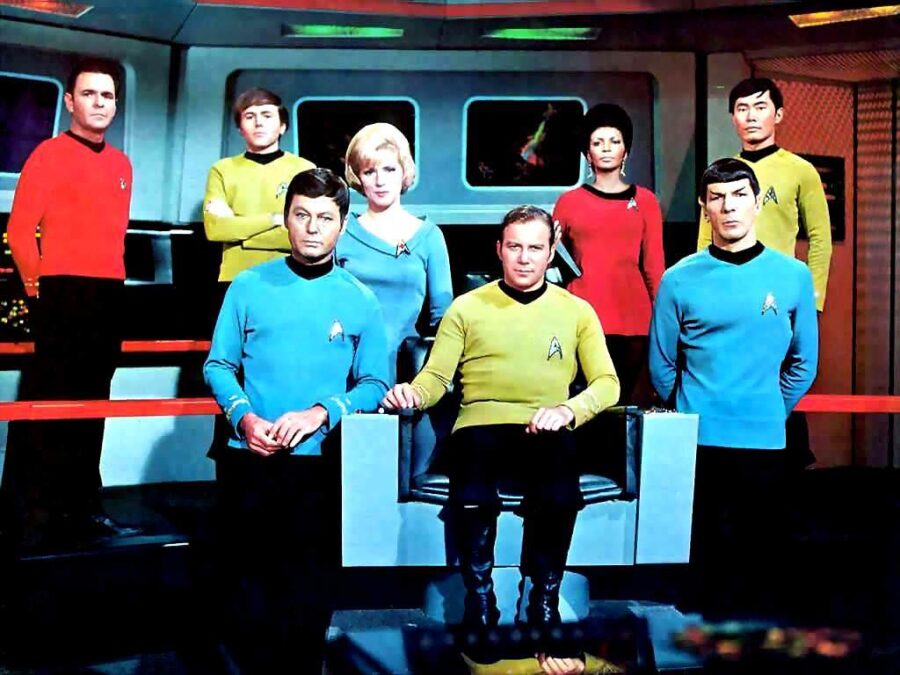
The series that started it all has aged but is still entirely enjoyable, thanks in large part to the remastered versions which cleaned up the original prints and updated some of the FX.
CBS wanted Gene Roddenberry’s vision to be Wagon Train in the stars, but Roddenberry and the show’s staple of respected science fiction writers (like Harlan Ellison) had loftier ambitions. They used their platform to tell complicated and thought-provoking stories and to build interesting characters.
The camaraderie of the holy trinity (Kirk, Spock, McCoy) is the centerpiece of the show, which did its best to challenge the ideals of its viewers (as with the first ever interracial kiss on television in season 3) and also entertain them. It’s funny too, in all the right moments, with the constant teasing and push and pull between McCoy and Spock providing the perfect angel and devil on Kirk’s shoulders as he makes all the big decisions.
The three of them: Kirk, Spock, and McCoy are some of the best characters in the history of television and the supporting cast of regulars like Scotty, Sulu, Chekov, Uhura, and even Nurse Chapel are unforgettable.
In Star Trek’s second season, Kirk admonished his crew to boldly go by telling them “Risk is our business!” But it was Star Trek’s business too, and the franchise has always been at its best when it’s taking risks. Few have taken them better than the show that started it all.
5. Star Trek: The Next Generation
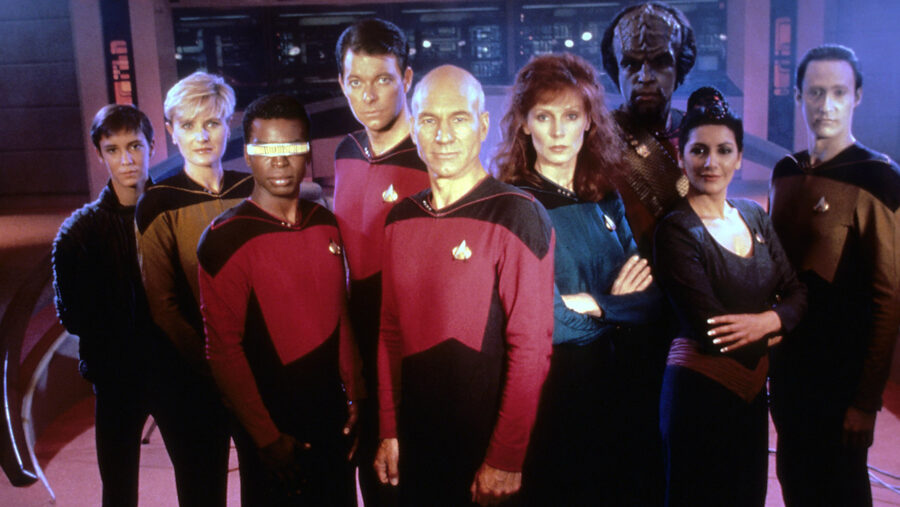
In 1994 Star Trek: The Next Generation was nominated for Outstanding Drama series by the Emmies. It deserved to be nominated more. The long-gestating television follow-up to the Star Trek of the sixties debuted in 1987 and immediately struck a different tone than its predecessor with a mature, effete Captain who seemed more like a father figure than a gutsy adventurer.
It worked. It worked for much the same reasons the original series did, by taking on challenging topics in a science fiction setting using great writing and being unafraid to take risks. It has stood the test of time because its lead, Captain Picard, became something of a father figure to the kids watching with their parents.
You want to BE Captain Kirk, the swashbuckling hero making all the tough calls and winning against impossible odds. You want to SERVE under Captain Picard, you want to stand with him, next to him, and soak in all his wisdom.
Whether you prefer Kirk or Picard is probably a function of who you are, but thanks to great writing and bold vision The Next Generation stands the test of time, responsible for some of the best moments in all of Star Trek. Characters like Data, Worf, and Q are some of its most enduring figures in all of pop culture.
6. Star Trek: First Contact
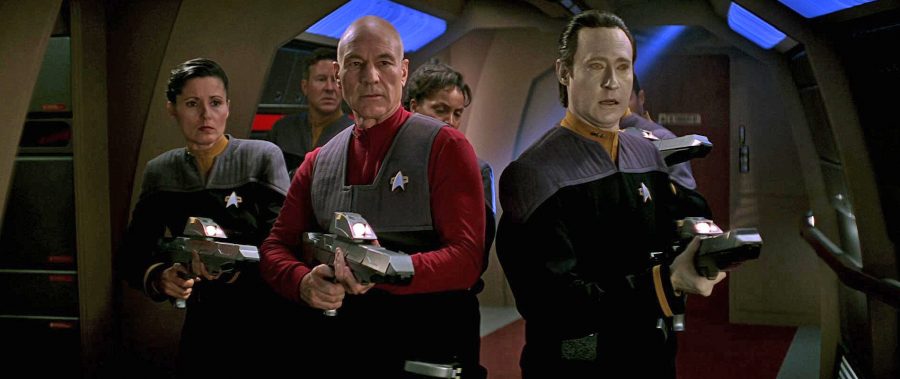
The Next Generation crew’s second foray into the world of feature films is inarguably their best. First Contact features the debut of one of Trek’s most beautiful starships the NCC-1701-E and drops it into a script that’s part Alien and, in some sense, part Close Encounters.
Both Picard and Data have some of their finest moments in this movie, and since they are the two best things about Next Gen, it makes sense that would result in the best Next Gen movie. But it’s not just the Picard and Data scenes that shine; it’s the scenes on the ground, too, with Troi getting drunk and being hit on by Zefram Cochrane and Riker’s wry grin as she drunkenly tries to explain the situation.
I don’t know if Jonathan Frakes is a great director, but he’s a great director here in this specific film working with this specific material. Every note is pitch-perfect. First Contact is taut and scary when it needs to be, fun and lighthearted when it doesn’t. It’s a shame none of the other Next Gen movies managed to be this good since First Contact proves this cast and crew had all the elements to deliver films just as good as the Kirk/Spock/McCoy originals.
7. Star Trek III: The Search For Spock
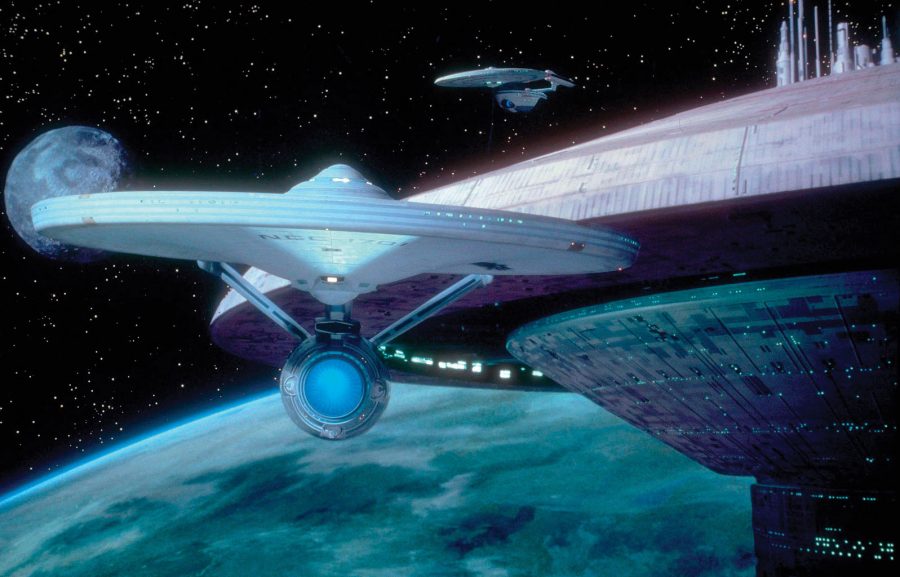
No movie could hope to follow Wrath of Khan and compare favorably, so predictably, Search for Spock is often overlooked at best and maligned at worst by Trek fans. It doesn’t help that Spock, perhaps the most beloved character in all of Trek, is barely in it, with Leonard Nimoy instead spending his time behind the camera directing.
But it’s good. Really good.
The first half is a heist movie, with Kirk and the crew plotting to steal their own ship. Starfleet’s finest officer goes against them to save his friend, and our space friends are all on board.
Towards the end of the film, some of the FX on the Genesis planet don’t hold up, and I’m not going to argue in favor of Shatner’s hammy fight with Kruge in a volcano. But the rest of it is excellent, particularly Shatner’s performance, which is without question the best of his career.
Watch Shatner’s reaction to the death of Kirk’s son if you’re looking for proof of his talent. On hearing the news, he attempts to sit down in his Captain’s chair and misses it entirely, ending up sitting on the floor where he moans in utter heartbreak, “you Klingon bastard, you’ve killed my son.”
The death of the Enterprise is brilliantly done and wrenching; it fits perfectly into the movie’s theme of life, death, and rebirth. McCoy sums it up best as the crew stands there on the surface of a dying planet, watching the hulk of the Enterprise blaze a trail of fire across the sky. There, McCoy tells Kirk it was, “What you had to do, what you always do. Turned death into a fighting chance to live.”
8. Star Trek: The Motion Picture
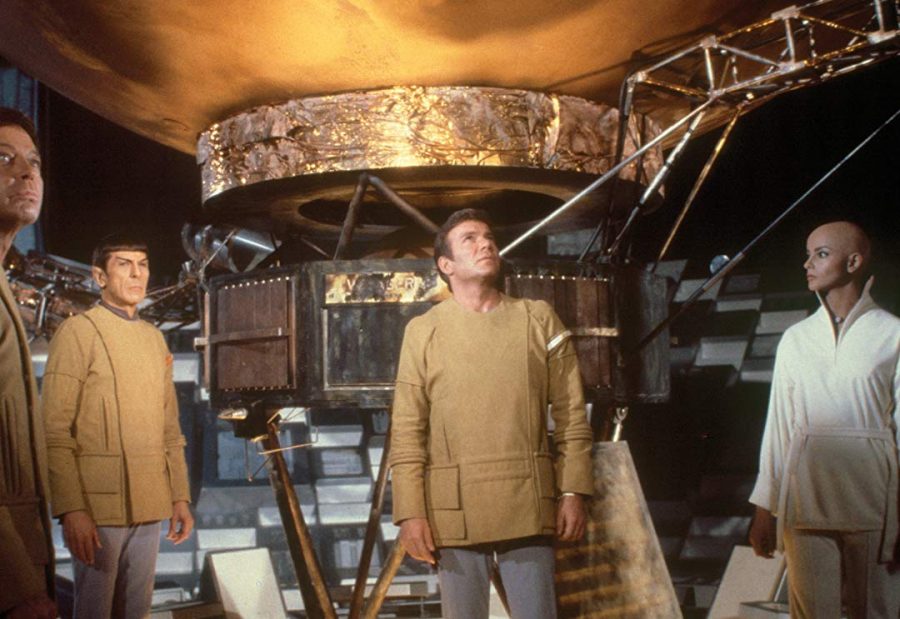
Long, slow, and boring are the words some Trek fans would use to describe The Motion Picture. It’s been called The Motionless Picture by many. But that’s because it’s not focused on action. Instead, it is perhaps the smartest, most thoughtful, most clearly science fiction of all the Star Trek movies.
People looking for action and adventure aren’t going to find it here, but those things are never what made Star Trek so great in the first place. What you will find is a brilliant piece of science fiction which instead of trying to be Star Wars, as so many other films were trying to do in that era, tries to be a Star Trek version of 2001: A Space Odyssey. It works.
This is the movie that gave us the Enterprise Refit, arguably the most beautiful starship in all of science fiction. This was the movie that created the Star Trek score, the one we all know and love from every movie and every single episode of Star Trek The Next Generation.
Sure, no one shoots anything, except that one weird scene where they blow up a meteor in a wormhole, but the stakes are high, and where Kirk and his crew end up is incredible. And I’m not talking about that crazy 70s gold medallion McCoy shows up wearing around his neck.
It’s time The Motion Picture got its due as an ambitious piece of art and not just an adventure film. So it sits comfortably here, at number eight on this list.
9. Star Trek: Picard Season 3
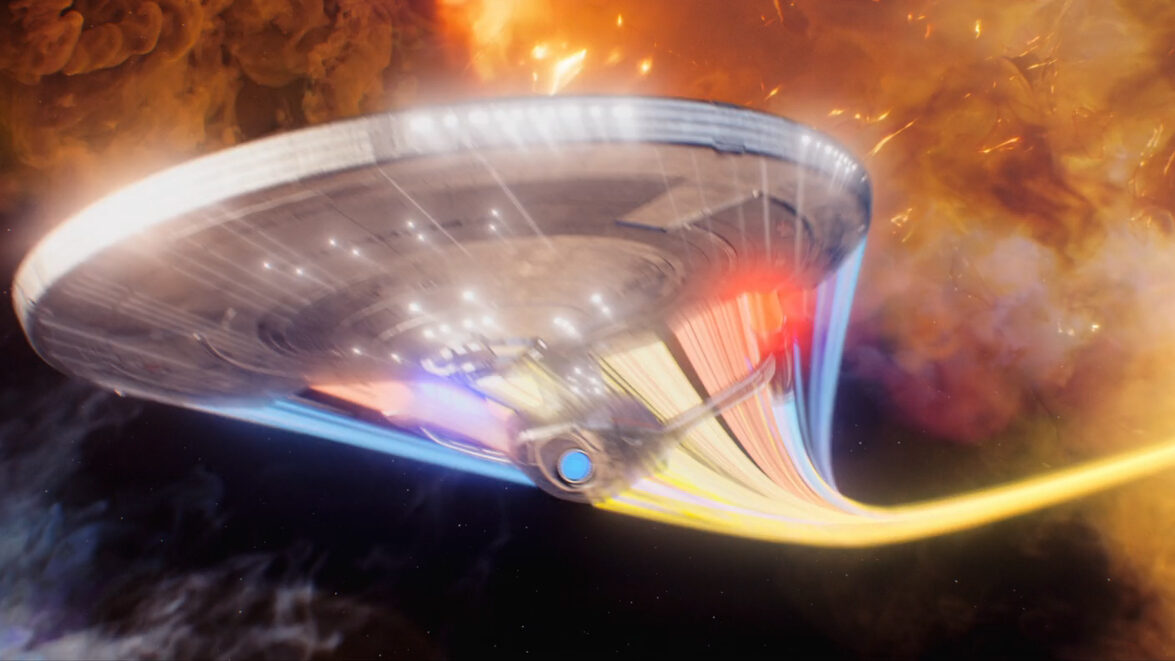
The first two seasons of Star Trek: Picard are so different from Picard Season 3 that they might as well be a totally different show. They not only brought in an entirely new cast, they also brought in a totally new showrunner and a new creative team behind the scenes.
The Star Trek: Picard team that has taken over for season 3 actually likes Star Trek and knows something about it. So they binned everything Picard had done previously and started from scratch. That includes rebuilding the show’s atrocious opening credits.
Since Star Trek: Picard season 3 is basically a different show, I’m treating it as a different show in these rankings.
As of this writing Star Trek: Picard season 3 has completed its 10-episode run in a beautiful and grandiose fashion. The season was more than a TV show; it’s the perfect movie the Star Trek: The Next Generation crew never really got. It’s the best thing Star Trek has done in decades, and it’s all thanks to the season’s new showrunner Terry Matalas.
It should have been impossible to turn this show around, but by basically trashing everything it was and starting anew, Terry Matalas has done it. Along the way, he even managed to fix some of the franchise’s more egregious mistakes (everything that happened to Data, for instance).
It’s not that Matalas brought back the entire Star Trek: The Next Generation cast (which is what the show should have done in season 1) which makes it good. Plugging in a bunch of old actors will only get so far and the tone of the show is nothing like those classic Next Gen episodes.
Instead, Star Trek: Picard season 3 captures a tone akin to the original movie era of Star Trek: II, III, IV, V, and VI. The series’ hero ship (yes we have hero ships again) is specifically designed to be reminiscent of the refit Enterprise from that era. The Titan-A is a Neo Constitution, and it may be the coolest ship Star Trek has produced since the Enterprise-E.
It’s Matalas’ obvious love and dedication to all things Star Trek which made Picard season 3 soar. The devil is in the details and Star Trek: Picard gets all the details exactly right. That might sound simple, but it’s the only live-action Star Trek property do it since Enterprise.
10. Star Trek IV: The Voyage Home
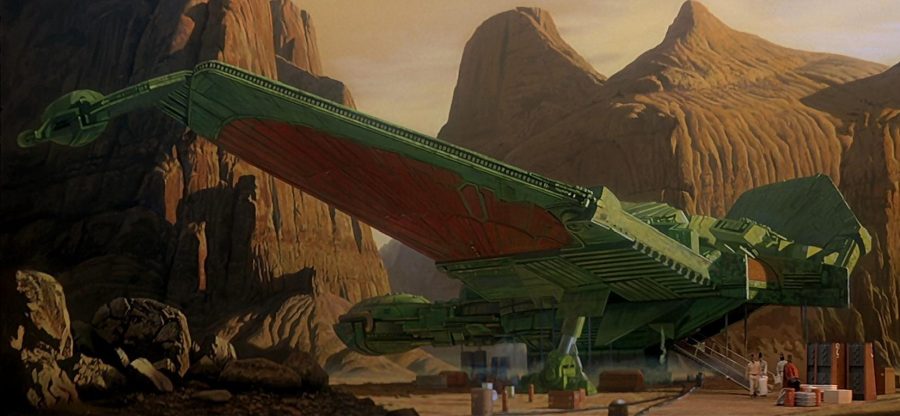
There was a time when Voyage Home would have been higher on this list, but this time travel story in which Captain Kirk takes his crew back in time to rescue some humpback whales hasn’t aged as well as some of the other films.
That said, watching the crew on a shaggy journey aboard a broken down, captured Klingon bird of prey wryly named the HMS Bounty by Doctor McCoy, while simultaneously trying to understand 1980s culture is still a joy.
This is without a doubt the funniest Star Trek movie, thanks in no small part to the direction of Leonard Nimoy, who would later take those unexpected comedy chops on to direct the comedy hit 3 Men and a Baby. It’s still good, even if the world has passed the very 80’s tone of this adventure by.
11. Star Trek Beyond
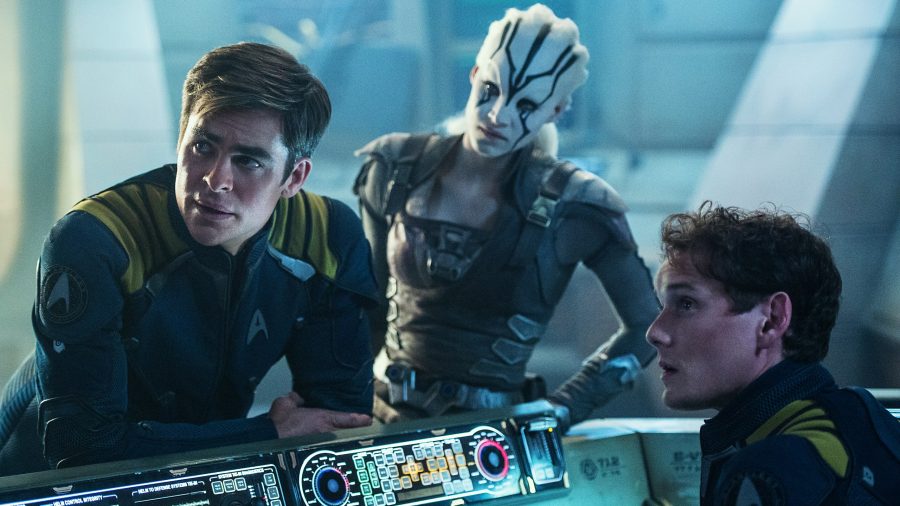
The first of the Kelvin universe movies to even attempt to go out into the universe and see what was out there, Beyond comes closest of the new cast movies to capturing the spirit of what Gene Roddenberry’s dream is all about. It also does a better job of getting the characters right, with fewer of those rage-monster moments from Spock and a Kirk who isn’t some hothead idiot but actually, a thoughtful, seasoned commander who knows when to take risks and when not to take them.
Aside from all of that, it’s incredibly fun, featuring the best use of a Beastie Boys song I’ve ever seen on screen and a new look at an old-school starship design that harkens back to the days of the Enterprise TV series era NX-01 design. There’s a lot here to love; it’s a rip-roaring adventure with a story to tell that isn’t a rehash of where other better Trek movies have gone before. Sure, the villain doesn’t quite work, and I have no idea how to explain what they’ve done to the Enterprise engine room, but Star Trek: Beyond boldly goes.
12. Star Trek: Lower Decks
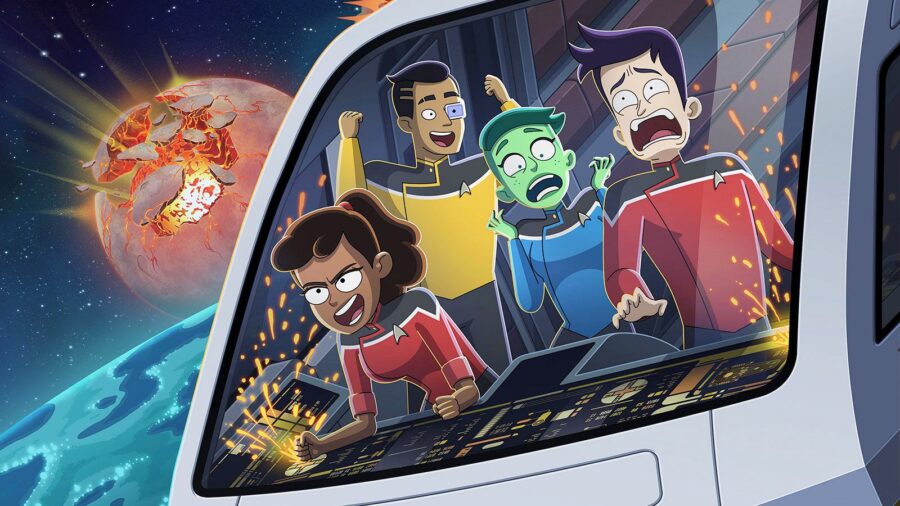
Star Trek: Lower Decks season 4 has just begun and as of this writing only air two-episodes. That means this ranking will be in flux until the season ends.
The show continues to be exactly as good as it has been all along. Consistent quality is pretty rare, especially where Star Trek is concerned. So Lower Decks remains where it is, sitting strong in this spot on our ranking list.
Ranking Lower Decks here means episode after episode; it continues to prove it deserves that lofty rank. Not only does Mike McMahan’s show do something Trek has refused to do since the 90s, by actually using the world of the Federation that has already been constructed, but it goes out of its way to give fans all the things they’ve been wanting but that the Trek franchise has refused to give them.
Its Lower Decks finale finally gave us our first look at Will Riker commanding the Titan. That’s right, the Titan. It’s something fans have been clamoring for, for nearly 20 years, but that CBS and Paramount have refused to give us.
In season 3 they gave us even more of that, by bringing the Sovereign Class and actually using it. They took us back to Deep Space Nine and gave Quark and Kira screen time. In season 4 they took us on an adventure aboard the USS Voyager.
Showrunner Mike McMahan gives Star Trek fans what they want, not as fan service but as part of good storytelling. He makes it seem so effortless and right that it’s even more outrageous it has taken this long to happen.
What Star Trek: Lower Decks does so well is flat-out explore the Star Trek universe that has already been created. No Trek on screen has done that since Deep Space Nine. Voyager abandoned the Alpha Quadrant to go somewhere else. Enterprise was a prequel.
The Kelvinverse movies were set in an alternate dimension. Discovery is a prequel. Star Trek: Picard is some kind of weird hybrid set in a future that avoids showing us anything we’re familiar with yet still calls itself Star Trek.
Meanwhile, Star Trek: Lower Decks is faithfully set during the Star Trek: The Next Generation time period and uses what we already know of that world to create new stories. Sometimes it even uses it to create comedy, inside jokes that only real Trekkies will actually get, and broader humor for the newbies. It does it all seamlessly.
Lower Decks is the most Star Trek the world of Star Trek has been since the 90s. It deserves this ranking. Lower Decks sits happily here on our ranking of everything Star Trek has ever produced.
13. Star Trek: Enterprise
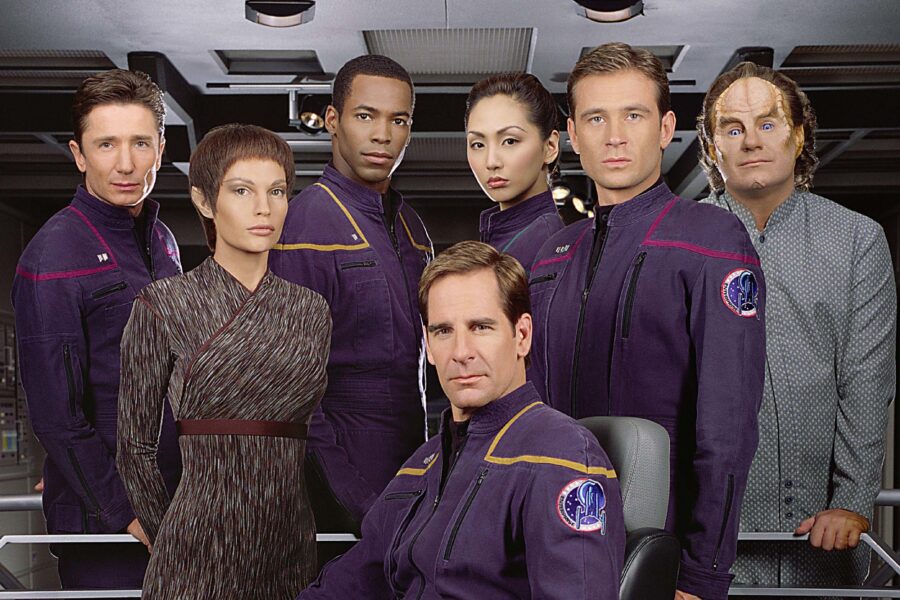
Star Trek: Voyager finished its run on television in 2001 and the show in general, hadn’t been well received. Meanwhile, the most recent Next Generation movies were being savaged by critics and fans alike. It seemed like the perfect time to take Trek in a new direction so instead of pushing forward in the era started by Picard back in the 80s, Trek head honchos decided to delve into Trek’s past with a prequel series set before Kirk and Spock.
Enterprise followed the crew of Earth’s first ever warp 5 vessel, the Enterprise NX-01, as humanity began its first push out into the galaxy with the help of the Vulcans. The show had an opportunity to show us the birth of the Federation, as humans journeyed around the cosmos making new allies and encountering enemies like the Klingons for the first time.
It did not do that. Instead, the first season immediately got bogged down in a poorly thought-out time-travel plot which could have happened in any era of Star Trek and wasted the premise the show came up with in the first place.
Lackluster ratings and lackluster fan response caused its cancellation after four seasons in 2005 sending the entire Trek franchise into a total hibernation until JJ Abrams rebooted everything with his 2009 Star Trek film.
So why is it so high on this list? While they initially botched the show’s premise, the series began to find its footing at the end of the third season. By the fourth, they actually started delivering on the promise Enterprise showed us in the beginning. Also, they eventually ditched that terrible opening credits song. The fifth season could have been great, but we’ll have to settle for a third and fourth season which showed hints of greatness in a series that never fully became what it might have been.
14. Star Trek: Strange New Worlds
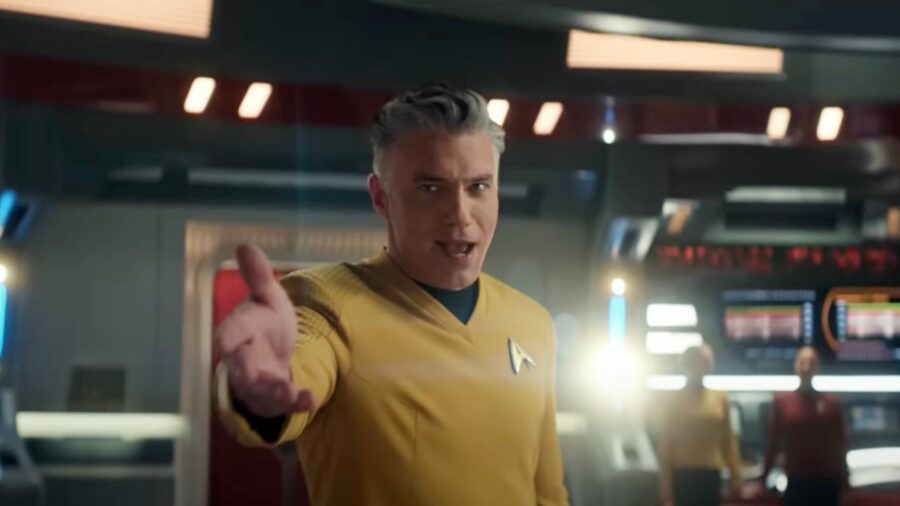
As of this writing, season 2 of Star Trek: Strange New Worlds has finished airing. So this is now a fixed ranking until the show returns for season 3.
In Season 1, Strange New Worlds demonstrated massive potential and got off to a great start. Season 2 failed to build off that potential and settled instead for merely maintaining the previous season’s approximate level of quality.
If there was any change from season 1 to 2 it was that the show drifted into being less about any specific star characters and became even more of a true, full ensemble. In way, Strange New Worlds has an ensemble approach like Deep Space Nine, if Deep Space Nine hadn’t had linear storytelling ambitions.
But: That one season is the second-best first season Star Trek has ever produced. Star Trek: The Next Generation notoriously took time to find its footing. Deep Space Nine was too slow out of the gate. Every first season of every show was never quite right. Most got it right in season 2.
Star Trek: Strange New Worlds got it right in season one and maintained that. It was the best first season of any Star Trek show outside the first season of the original series.
Star Trek: Strange New Worlds follows the adventures of Captain Christopher Pike, the second captain of the Enterprise. James T. Kirk was actually the ship’s third and before Pike, the ship was captained by Robert April (who shows up in Strange New Worlds as an Admiral). Pike is the show’s biggest strength, played brilliantly by Anson Mount, who first appeared on the otherwise awful series Star Trek: Discovery. Mount’s one-season stint on the show still stands as the best thing the series has ever done, even if the scripts they gave him were always terrible.
But the scripts for Strange New Worlds, even in season 2, are not generally terrible. They’ve been logically consistent (which should be a given, but you know isn’t if you’ve seen Discovery or Picard), upbeat, fun, even thoughtful, and introspective.
Perhaps best of all, it isn’t cheap. Though it must be pointed out, there were clear budget cuts for season 2, and at times it was obvious on screen. However, the first season (in particular the season finale) had plenty of special effects, including numerous lovingly crafted, detailed shots of the glorious, newly refitted Enterprise.
The series makes it a point to let the ship itself be a character in the show, or at least a strong anchor for everything that happens, as it always should be. The show has capably developed a sense of place, even of family, among the Enterprise crew.
15. Star Trek Books
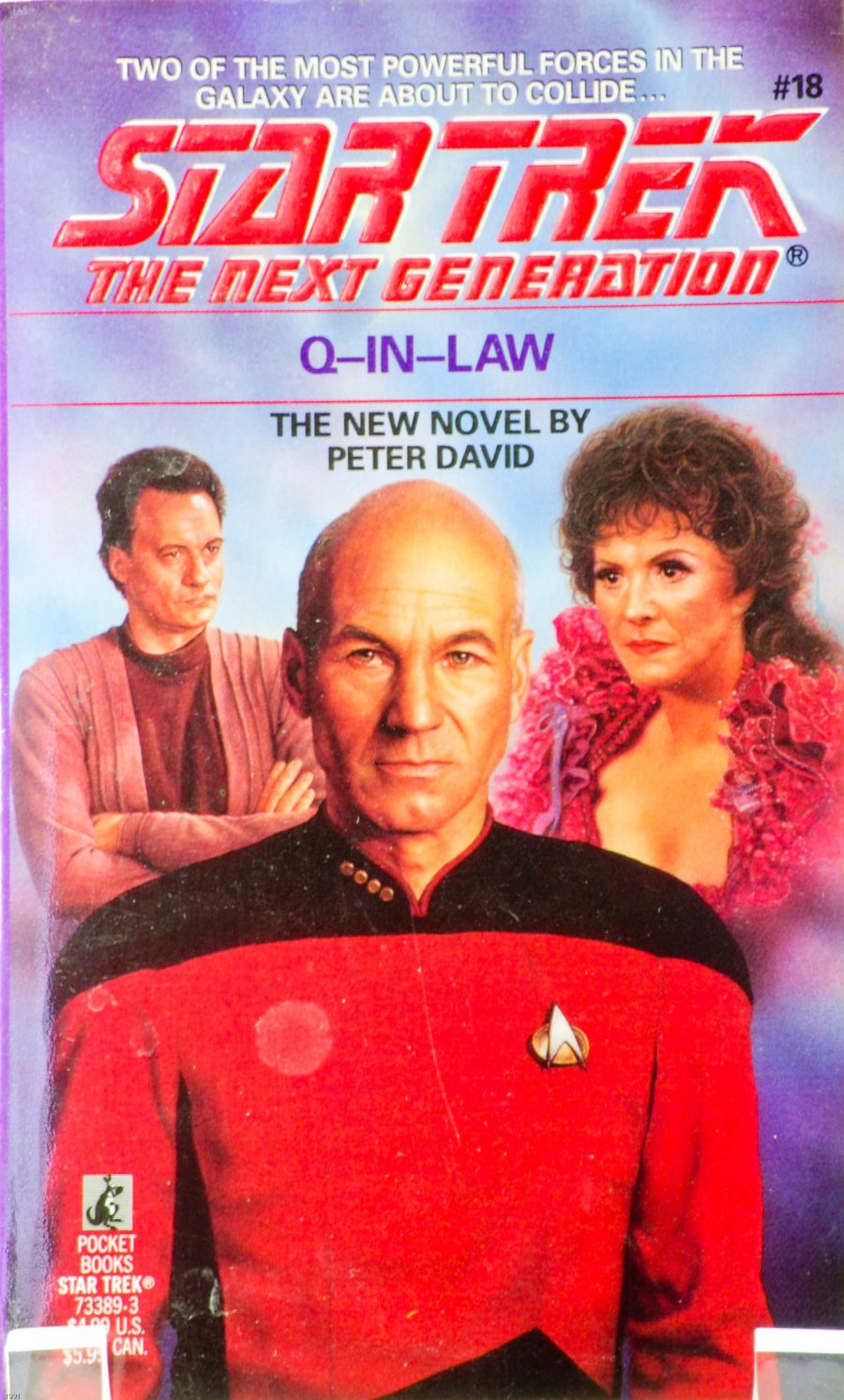
Some of the best and worst ideas Star Trek has ever had are in print. Hundreds of paperback books have been written in the Trek universe. Some have gone on to become best sellers, some are things you’ve never heard of.
The first ever Star Trek novel was published in 1967. Written by James Blish and J.A. Lawrence, this first stab at fiction outside the television program didn’t even give the books titles. They just slapped numbers on the cover.
Eventually, Trek would take off in print, and by the 90s Star Trek books were being cranked out on a regular basis by well-known and talented authors like Vona McIntyre, M.S. Murdock, Michael Jan Friedman, and Peter David. Especially Peter David.
Several of Peter David’s books not only went on to become bestsellers but received much-deserved critical acclaim. His awkwardly named Star Trek: The Next Generation book Q-In-Law is without question the high-water mark in Trek paperbacks and well worth a read no matter what you think of Star Trek.
Not every Star Trek book is Q-in-Law, and the varying levels of quality present in these hundreds of different books are what keep them collectively from being higher on this list.
16. Star Trek: Generations
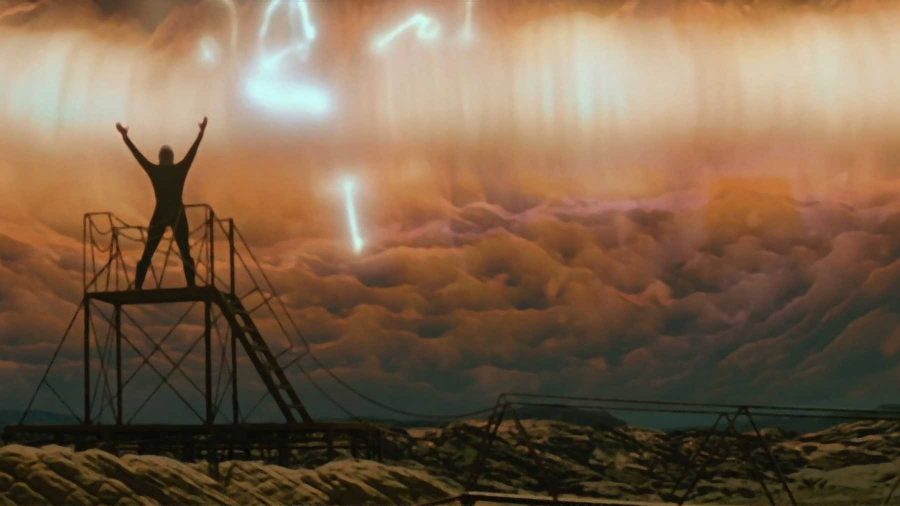
The best part of Star Trek: Generations happens in the first fifteen minutes aboard the NCC-1701 B with Kirk, McCoy, and Scotty playing nursemaid to a new Enterprise crew captained by Ferris Bueller’s best friend Cameron. It’s really good. Then the meat of the movie starts, in which the Next Generation crew begins their big screen adventures by getting tangled up in the Star Trek equivalent of a What Dreams May Come scenario. Robin Williams did that better.
Sure, the film has other great moments. That’s why it’s so high on this list. Watching Picard and Kirk interact in the ribbon is well worth the price of admission. But it also has problems, oh so many problems. Riker gets the Enterprise destroyed for no apparent reason, the Duras sisters are terrible villains, and Data is a lot better without that annoying emotion chip. Plus, I’m still not sure how to feel about Captain Kirk getting killed by some random guy on a pile of rocks. The death he got aboard the Enterprise B was the better one.
But the movie looks incredible, the cast is excellent, and again, those first fifteen minutes aboard the Enterprise B are so good, it’s easy to forgive everything that happens next. Thank god they followed this movie up with First Contact, or I doubt we would have gotten another Next Generation flick. Yet had the franchise ended here that would have spared us Insurrection. Maybe that would have been a better future. More on that later.
17. Star Trek 2009
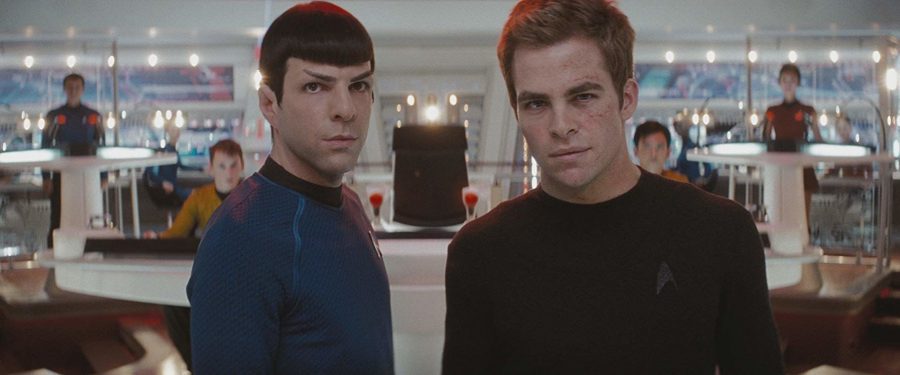
The JJ Abrams reboot of Star Trek is a sloppily written shoot-em-up without any of the nuance or introspection present in any other incarnation of Star Trek. The plot largely makes no sense and it glosses over many of the important details which were what made Star Trek, Star Trek in the first place. It’s clear from watching this that director JJ Abrams wanted to direct Star Wars, and this was his audition for the Star Wars job he later got.
That said, the 2009 reboot looks incredible, it’s well cast (even though again, they should have made a different film set in the same universe with new characters), and if you just sit back and enjoy the ride it’s a good one. The first ten minutes, featuring the death of the Kelvin and George Kirk, are ten of the best minutes you’ve ever seen in any Trek film ever.
They deserve some credit, too, for doing a passable job of connecting this series to the original films. Leonard Nimoy plays a pivotal role as the Spock we know passing the torch, and the alternate universe plot is a good excuse for what they’re doing. At least it’s less insulting than pretending the original movies didn’t exist so they can cast people who kids might think are hot.
Or you could get hung up on the fact that they turned logical Mr. Spock into a rage monster, promoted Kirk from cadet to Captain in about five minutes, and blew up Vulcan for no good reason.
18. Star Trek: The Animated Series
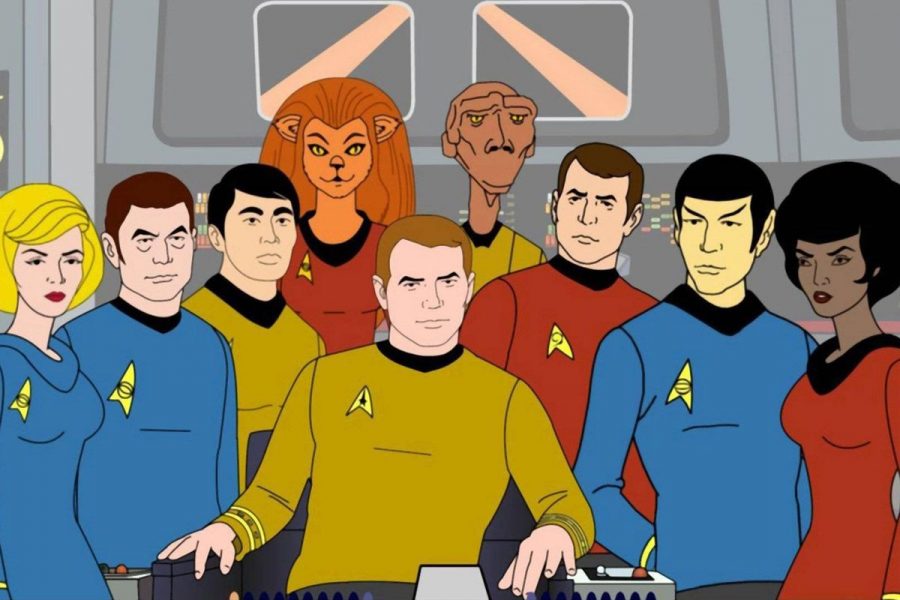
Dwelling in the Star Trek dark ages between the cancellation of the original series and the revitalization of Trek with The Motion Picture is Star Trek: The Animated Series. Unlike almost every other animated version of something popular in live action, the Trek animated series features the vocal talents of everyone in the original cast and an extra dose of James Doohan who, in addition to voicing Scotty, also provides voices for lots of other ancillary characters.
Working in its favor is the show’s ability to do things that they couldn’t do on a live-action TV show’s special effects budget. We get new alien characters like a three-armed navigator named Mr. Arex, whose odd limb arrangement couldn’t have been done with TV Trek makeup.
Many of the episode scripts are written by incredibly talented science fiction writers too, and there is an attempt here to explore big ideas in the same way the live-action show did. But, those big ideas are now being shoehorned into a 20-minute animated show instead of a 42-minute live-action one. There isn’t much time, and a lot of the episodes end up feeling rushed. Some of them are flat-out silly.
The quality of the animation varies a lot, partly as a result of the time in which it was created (The Flintstones was still the pinnacle of animation in 1973) and partly as a result of sheer laziness from the animators they used to bring their stories to life.
Star Trek: The Animated Series is an uneven ride but one that hardcore Trek fans won’t mind taking.
19. Star Trek: Voyager
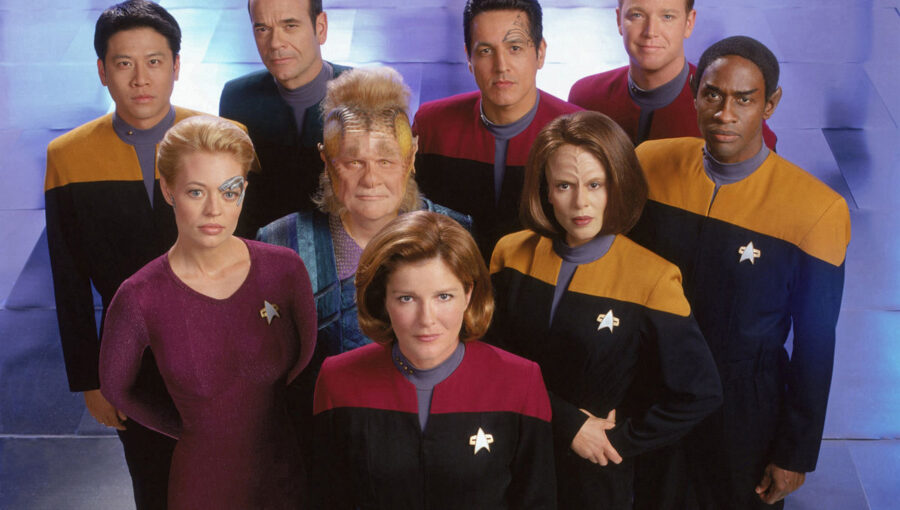
Voyager began with the best premise any Trek show has ever had. A by-the-book Federation crew is stranded seventy years away from home with a bunch of terrorists. They’re forced to work together for survival and must claw and scratch their way back to the Federation in a hostile and totally unknown part of the universe.
For most of its run, Star Trek: Voyager ignored that premise and went with a technobabble script of the week.
When the central premise of the show was addressed, it was hampered by underdeveloped characters played by an unevenly talented group of actors. Robert Beltran may be the worst actor in all of Star Trek, and even if he weren’t, after seven seasons, literally the only thing we know about his character, the ship’s first officer, is that he’s Native American (cue the pan flute). Roxanne Dawson has turned into a capable television director, but as an actress, she has a range of emotions that run from pouty to whiny. That’s a problem when you’re playing a Klingon.
When it works the show is carried by the raw talent of Robert Picardo as the ship’s loveable holographic doctor and Jerri Ryan after she joins the show as Seven of Nine in the fourth season. Their work is fantastic and they elevate everyone around them, including Kate Mulgrew whose Captain Janeway is at her best when playing off Seven. Voyager’s worst episodes are among the worst television ever, and Voyager’s best episodes like “Equinox” are about on par with an average Season 5 episode of Star Trek: Deep Space Nine.
It’s after Voyager picks up Seven that the show has all of its best moments, which means if you watch it, you’ll have to sit through three seasons thirsting for the all too few moments when The Doctor is on screen. Voyager is one of Star Trek’s biggest disappointments, a perfect premise with huge potential, often squandered by bad writing and an inconsistent direction.
When Voyager is good, it can be very good. When it’s bad, it can be very bad. Nostalgia and a spate of newer, truly terrible Star Trek shows have probably benefitted Voyager. These days it’s easier than ever to forget those terrible moments and remember the good times. So in honor of those good times, Star Trek: Voyager sits here on the ultimate Star Trek ranking list.
20. Star Trek Comics
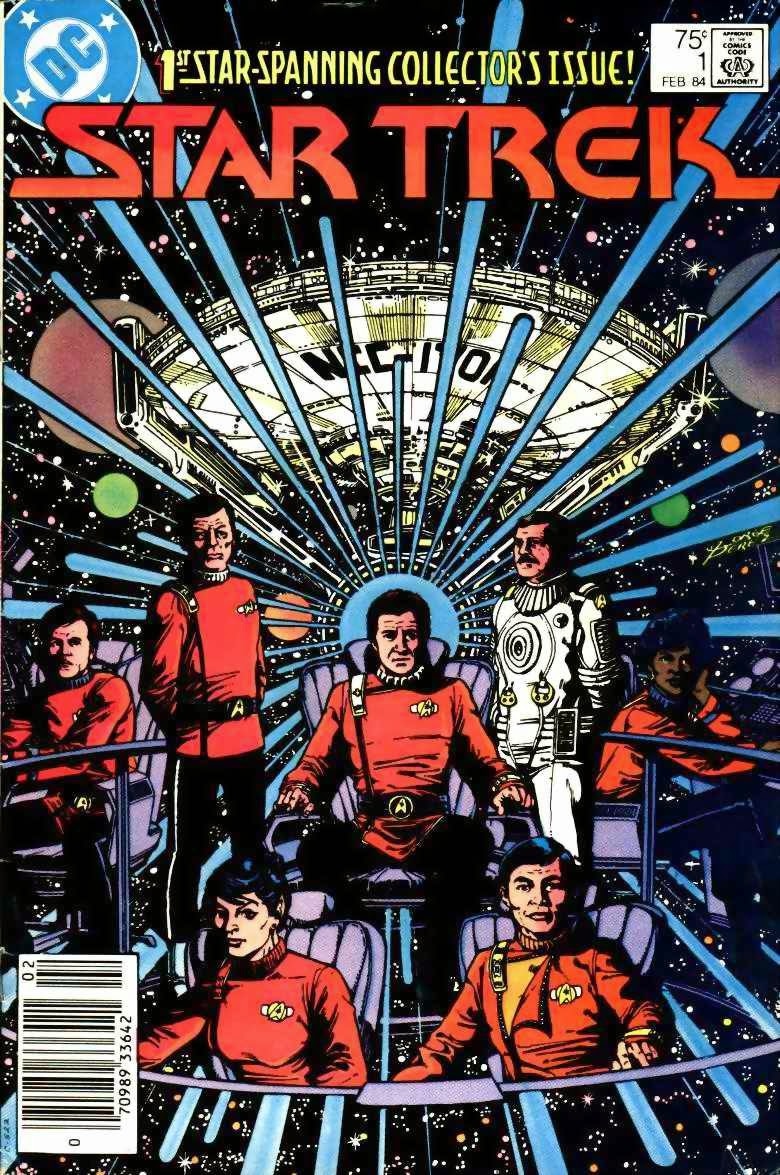
Comics set in the world of Star Trek have been produced almost continuously since Gold Key Comics published the first one back in 1967. In 1979 they had a run at Marvel Comics, before beginning arguably Trek’s most successful run in 1984 at DC.
Unlike Trek TV shows before Deep Space Nine, the Comics often explored longer, linear story arcs in print, fleshing out the various bridge crews and exploring different themes. Many of the best writers of the Star Trek paperbacks, like Peter David, contributed stories and while not every comic has been gold, they’ve often gone where no other Trek has before. In those ink-stained pages, pre-dating Worf’s appearance on the Enterprise-D, Captain Kirk had a Klingon bridge officer named Konom.
Star Trek comics finished their run at DC in 1996, living for a while at Malibu Comics where they featured stories written by such Trek actors as Mark Leonard Baker (Sarek) and Aaron Eisenberg (Nog).
Currently, IDW produces Star Trek comics, telling stories in classic Trek cannon, the Kelvin universe, and more recently, the world of Star Trek: Discovery.
21. Star Trek: The Experience
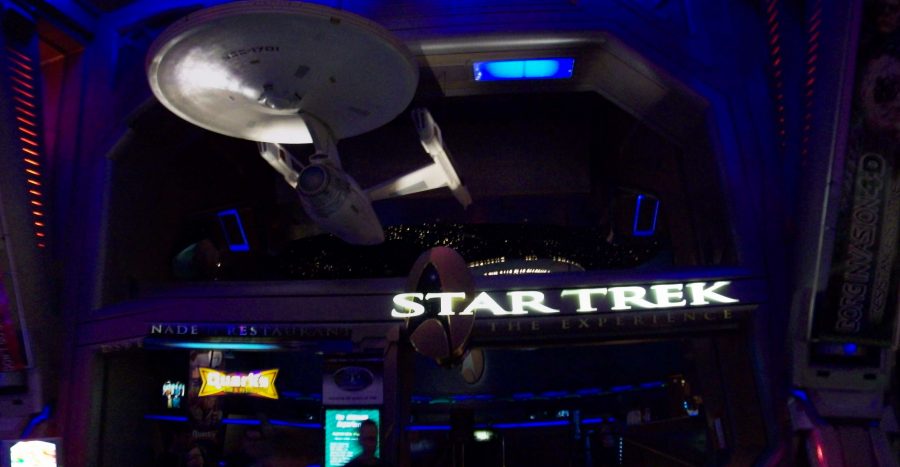
After plans for a hotel shaped like the Enterprise fell through, Las Vegas built Star Trek: The Experience instead. The attraction opened in 1998 at the Las Vegas Hilton and lived there for ten years until its closure in September of 2008.
Inside Star Trek: The Experience, guests would find something which was supposed to be Quark’s Bar… but actually looked like a kind of Sci-Fi mishmash which vaguely resembled Quark’s Bar. Why they couldn’t construct a bar that actually looked like Quark’s Bar from DS9 is anyone’s guess, they clearly went to a lot of trouble and expense building the thing they called Quark’s Bar, but it did not look like Quark’s Bar, and since I didn’t see Mourn there, I think it’s safe to say it was not. But they did serve a blue alcoholic beverage which called itself Romulan Ale.
In addition to various drinking opportunities Star Trek: The Experience offered some half-assed Borg alcoves randomly stuck to the wall and a gift shop.
If you wanted to see any more, you had to start buying tickets. The right ticket would gain entry to The History of the Future Museum, showcasing items from Trek history. Another ticket gained entry to The Klingon Encounter, in which guests got transported onto the Enterprise D and then end up on a shuttlecraft simulator ride battling Klingons. A similar attraction was later added with a Borg theme instead of Klingons.
The simulators were a lot of fun and let you go on an actual replica of the Enterprise D bridge, and also resulted in more than a few geeky videos from nerds pretending to be Captain Picard (or Data for the more fully functional ones). Sure, you had to pay for it, but there’s really no price too high to step on the bridge of the Enterprise.
But man, Quark’s Bar sure was disappointing. And I’ll never stop wanting that hotel shaped like the Enterprise, looming over the Las Vegas strip.
22. Star Trek V: The Final Frontier
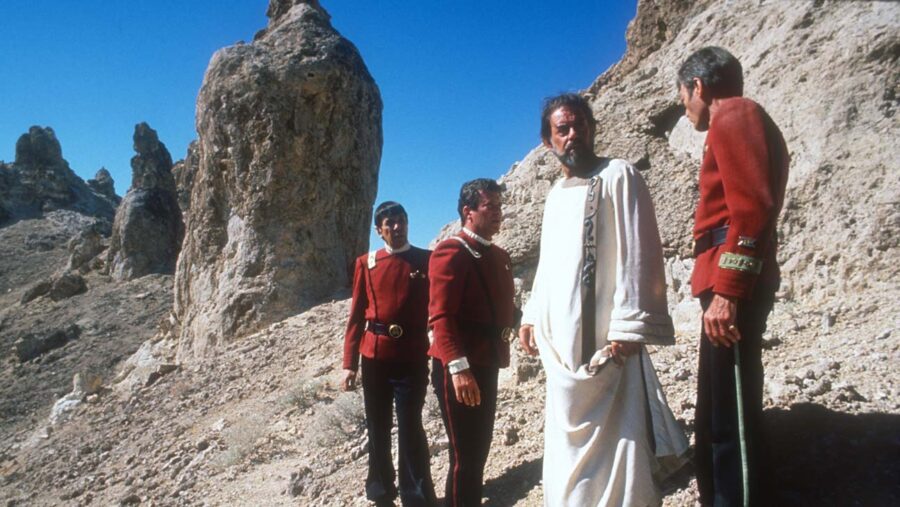
What DOES God need with a Starship anyway? That’s the pivotal question at the center of Star Trek V: The Final Frontier, and it’s about as stupid as this movie. Seeing Leonard Nimoy’s success at directing Star Trek’s 3 and 4, Shatner wanted a turn behind the camera, and the result is the worst-ever outing for the original series crew.
It opens strong, watching the holy trinity (Kirk, Spock, McCoy), spending time together on vacation, climbing mountains, and singing songs around a campfire. But then suddenly Uhura is dancing naked, Spock has a brother who can make Kirk’s entire crew betray him for no apparent reason, and we’re on a mission to find God or is it the Devil? Also, somehow, Klingons get involved.
There are moments of greatness in this film, like the campfire scene. Kirk’s response to Sybok’s offer to take away his pain is a classic Kirk reply which says something big in the way all great Star Trek stories do. Kirk: “I don’t want my pain taken away! I need my pain!”
But then there’s Scotty knocking himself out by running into a bulkhead.
I need my pain, and The Final Frontier is my pain. I’m glad it exists, but it’s not good. Shatner should have taken his own advice and gone to climb a rock instead of directing this film.
23. Star Trek: Nemesis
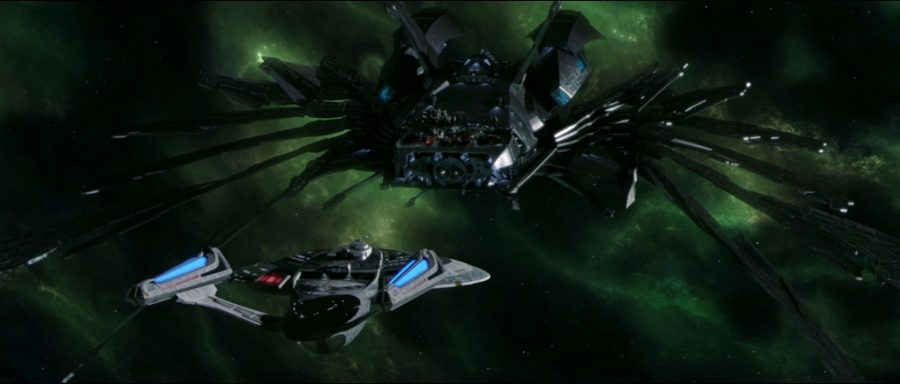
Star Trek: Nemesis looks amazing. The Enterprise E finally gets her due in this movie (before they swiss cheese her), and just seeing her fly around in full regalia (instead of plowing through swamp gas as she does in Insurrection) is worth the price of admission. Patrick Stewart’s performance is, as always, brilliant. Unlike Insurrection, this screenplay actually gives him something to chew on, and chew he does.
Outside of Sir Patrick’s dialogue, though, that script… that script goes totally off the rails the minute it dives into a weird clone Picard plot and just keeps falling apart from there. It’s badly directed, and the editing is even worse. At one point, Data shows up to magically rescue Picard immediately after everyone on the Enterprise bridge stands around explaining that they have no idea how to help him. I have no idea why the Remans exist and was much happier when we knew nothing about them; the cliche mega ship of doom trope has been done to death… and then there’s the death of Data.
There was no need for Data to die. The plot hole here is so big you could drive the Enterprise through it. But Data sacrifices himself for his Captain and his crew. Ok. Remember when Spock did that in Wrath of Khan? Remember that amazing funeral scene, the heart-wrenching reaction of everyone who’d ever known him? Data gets none of that. Instead, they just power up his mentally deficient replacement model, and all just sort of move on like they’re going to need a new toaster.
Even if the rest of Star Trek: Nemesis was great, it would deserve to be pretty far down on this list for its treatment of one of Trek’s most beloved characters. But the rest of it isn’t great. So here it sits.
24. Star Trek: Prodigy
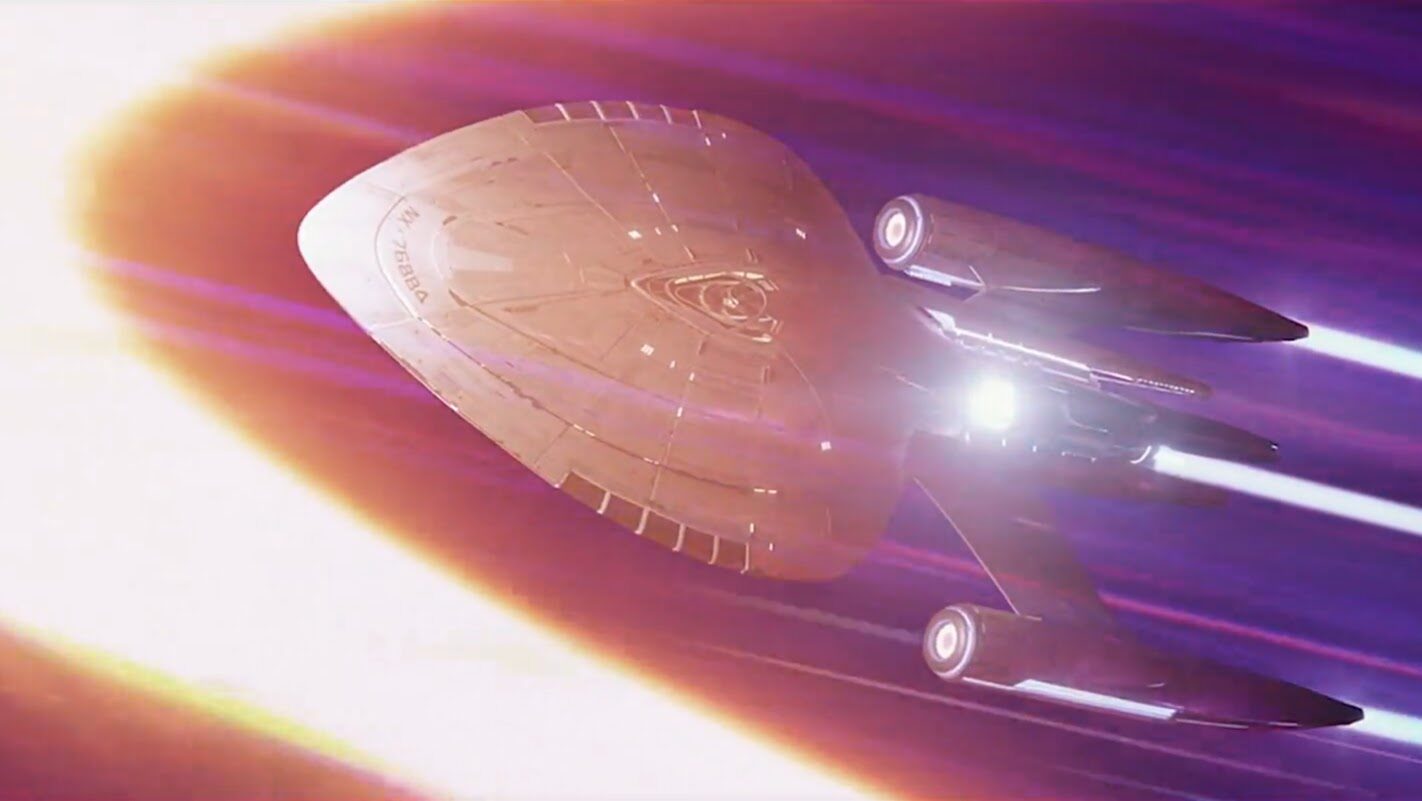
As of this writing Star Trek: Prodigy just completed its first season on Paramount Plus. The series is primarily aimed at kids in the 12 – 15 age range but has proven entertaining for adults as well, largely because it takes Star Trek seriously. After a premiere episode that was clearly a ripoff of Star Wars, Prodigy stopped trying to be something else and settled into being Star Trek. Star Trek for kids, but still actually Star Trek.
The animated series is put together through a series of short, mostly under thirty-minute episodes following the adventures of a group of kids who commandeer a lost Starfleet vessel named the USS Protostar. About the ship is a hologram version of Voyager’s Captain Janeway, there to serve as an instructor.
Janeway isn’t the only piece of Star Trek past included in the show. Unlike the new live-action Star Trek shows, Prodigy takes advantage of the Star Trek universe’s existing and established world. Rather than remaking Star Trek in it is own image, Prodigy uses Star Trek to tell new stories using the world that we already know. Prodigy sets out to add to the Star Trek universe, not reboot it, and for fans of Trek, that’s a beautiful thing to behold.
Prodigy is simple and clearly aimed at kids, but still a lot of fun. As a way to get the next generation involved in Star Trek, it’s perfect. As a way to keep adults happy and engaged, it holds a lot of value there too. That’s good enough to earn Star Trek: Prodigy a spot firmly in the middle of this list.
25. Star Trek: Insurrection
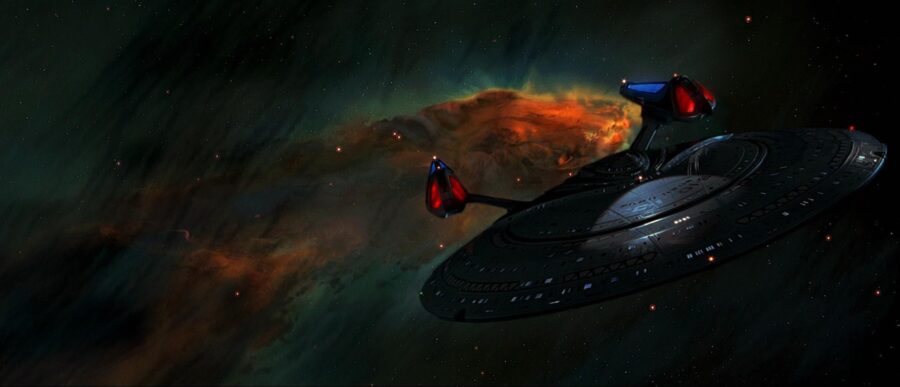
Jonathan Frakes directed Star Trek: First Contact, almost inarguably one of the very best Star Trek films. So you’d think having him back would have yielded better results than this… the worst of all the Next Generation films. Yes, even worse than the one where they killed Data and treated him like a used toaster.
The plot revolves around a planet with the key to eternal life. The villains are these guys who need to use it to get better plastic surgery. F. Murray Abraham does his best, but the script doesn’t work. The problem here is that these bad guys, much like the bad guys in Star Trek: Generations, just shouldn’t be worthy opponents for the Enterprise E. Yet, the script treats them like they’re about as powerful as the Borg.
Sorry, F. Murray Abraham is no Borg Queen.
It makes a lot of the same mistakes made by Star Trek V: The Final Frontier, relying on laughs that come at the expense of our hero characters while at the same time getting lost in a lot of pomposity about the meaning of life, which never pays off anywhere.
The movie’s low point happens when Riker decides to steer the Enterprise with a joystick ripped off a Microsoft Flight Simulator. It never recovers.
26. Star Trek Toys, Replicas, And Models
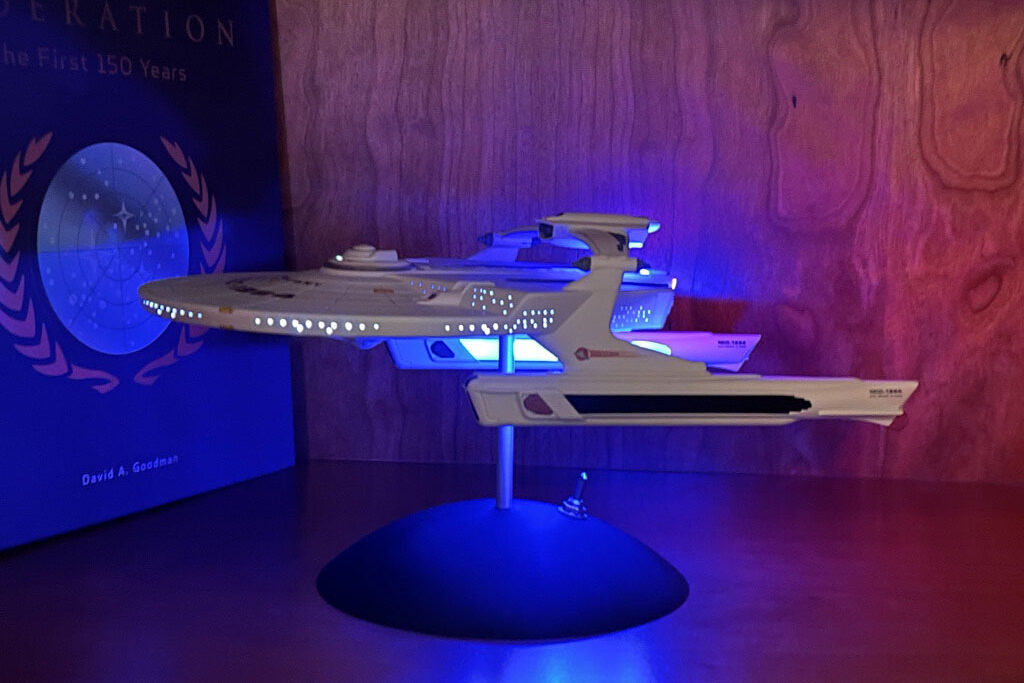
Star Trek toys started out as a tire fire and continued on as one until somewhere around the year 2000. The powers that be behind the franchise didn’t care about merchandising so they repeatedly licensed it out to idiots who churned out stuff that looked nothing like Star Trek but had the name of Star Trek or some Star Trek character stickered on it.
The business of making toys for Star Trek was such a disaster for so long that Netflix actually made an entire documentary about how bad it was. I don’t think there’s ever been a bigger missed earnings opportunity in the history of toy-making. They blew it.
In recent years things have gotten better. A lot better. Quality toy makers like Todd MacFarlane have gotten involved in making incredibly detailed and lifelike action figures from all eras of the franchise too. Highly skilled independent modelers have also begun making high-quality, scale models of starships with lights and sometimes even sound.
These days, you can even find some great, affordable replicas of props. I bought a phaser for my 7-year-old and he plays with it non-stop. The biggest producer of starship replicas, though, Eagle Moss, recently went out of business.
There are some big holes in the Star Trek toys game. Just try finding kids’ toy ships durable enough for your elementary schooler to play with. They don’t exist. You can’t let kids play with those awesome-looking Eaglemoss replicas… they tend to break if you breathe on them.
Star Trek toys have come a long, long way. But when you compare them to modern-day Star Wars or Marvel products, they still have a long, long way to go.
27. Star Trek Conventions
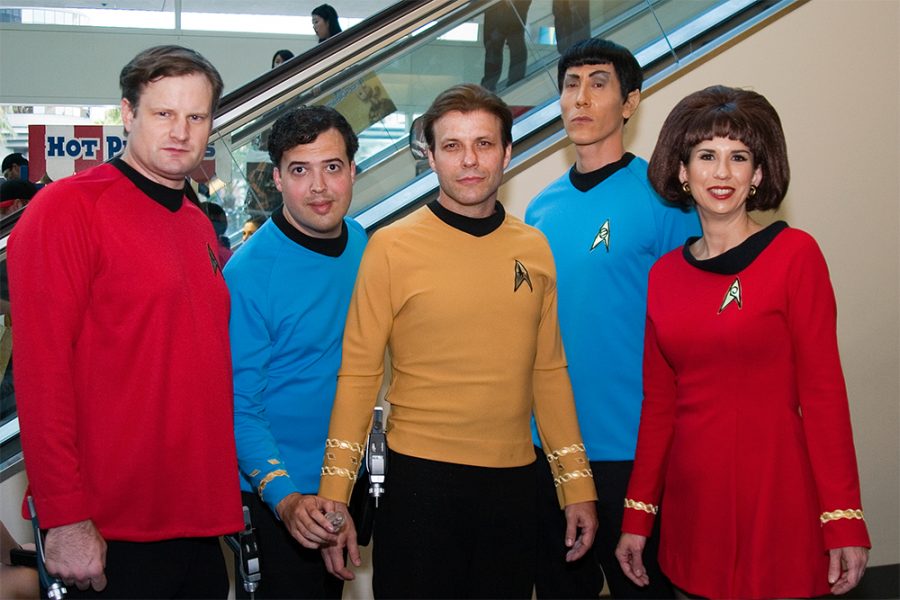
In the 70s Star Trek conventions were a counter-culture extravaganza full of free-love weirdos, sexy outside-the-box thinkers, and collectors selling rare never before seen items that couldn’t be found anywhere else. If the entire convention thing had stopped there, I’d probably have this higher on my list. But it didn’t.
These days Star Trek conventions are minimum-effort affairs where some guys show up to sell stuff you can find better versions of online and fans pay top dollar to be packed into a hotel convention hall and sit on uncomfortable folding chairs a hundred feet or so away from the guy who used to be Ensign Kim. If you’re lucky, incredibly lucky, Patrick Stewart will show up and announce a new TV show from on high above on a stage, or some corporate executive will shovel carefully packaged tidbits at you about something you’re required to love even if it was made with absolutely no consideration for the fans sitting there with you in that convention hall.
I’m not against things going corporate if it results in a slick, better-produced version of the thing fans like, but that is not what has happened at these conventions. I’ve been to the biggest, Star Trek: Las Vegas, and the place they called “Quark’s Bar” was a couple of folding tables and two guys wearing rubber Ferengi masks.
I did walk past Nicole de Boer wandering the halls with her entourage, and they did have a lifesize cardboard poster everyone could pretend was the Guardian on the Edge of Forever.
That was nice, I guess.
28. Star Trek Apparel
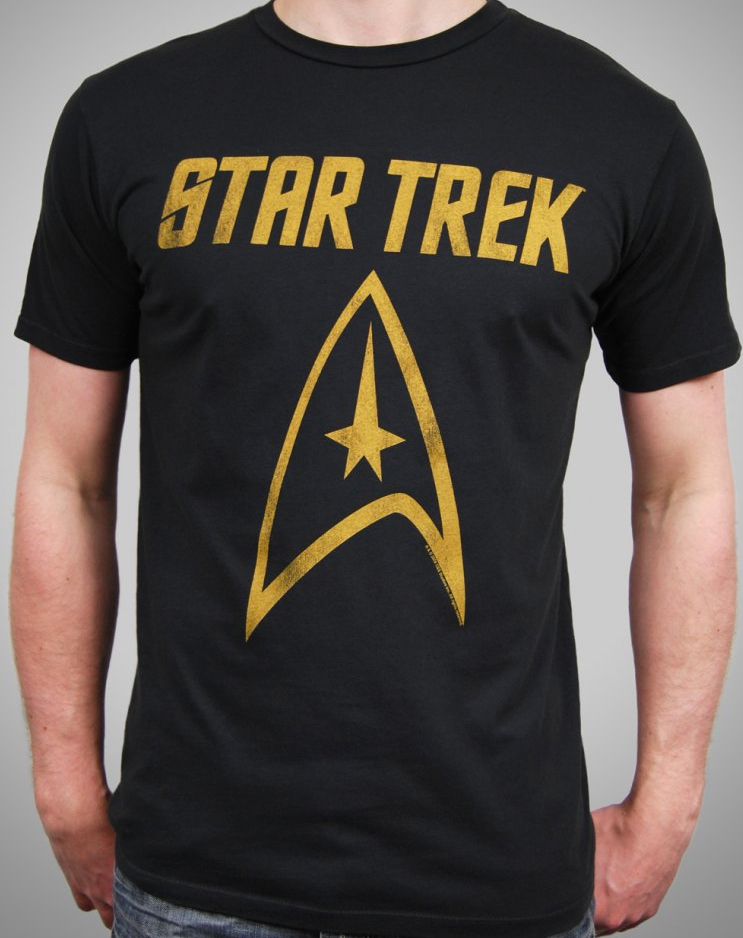
I like Star Trek and would happily wear an amazing Star Trek t-shirt if most of them didn’t look like the picture of the one I’ve included here. That lacks creativity or style.
Most of the officially licensed Star Trek apparel comes from whatever the most recent Star Trek is, and if you do happen to find something from the era of Kirk or Picard, it’s probably going to look stupid. You can just forget about finding anything from Deep Space Nine.
There’s some unofficially licensed stuff, but most of that is garish and totally un-subtle. There’s not much variety to it. You’d think I’d be able to find a T-shirt with a tribble on it and nothing else, but nope, that’s not a thing you can get at all.
It’s even worse when you start looking into costumes. A lot of amazing cosplayers making their own stuff, but if you’re looking for an accurate Star Trek replica uniform, good luck. You can find something that looks sort of like it might have been worn by Uhura if she added six inches to the hemline and didn’t know how to sew, but it’s not going to be accurate. Not at all.
Star Trek is the oldest and one of the most popular franchises on the planet, behind only Marvel and maybe Star Wars (depending on how bad the most recent movie was). This should be a no-brainer. I should be able to get something cool with a small, tasteful picture of the Enterprise on it. Instead, I’m wearing this…
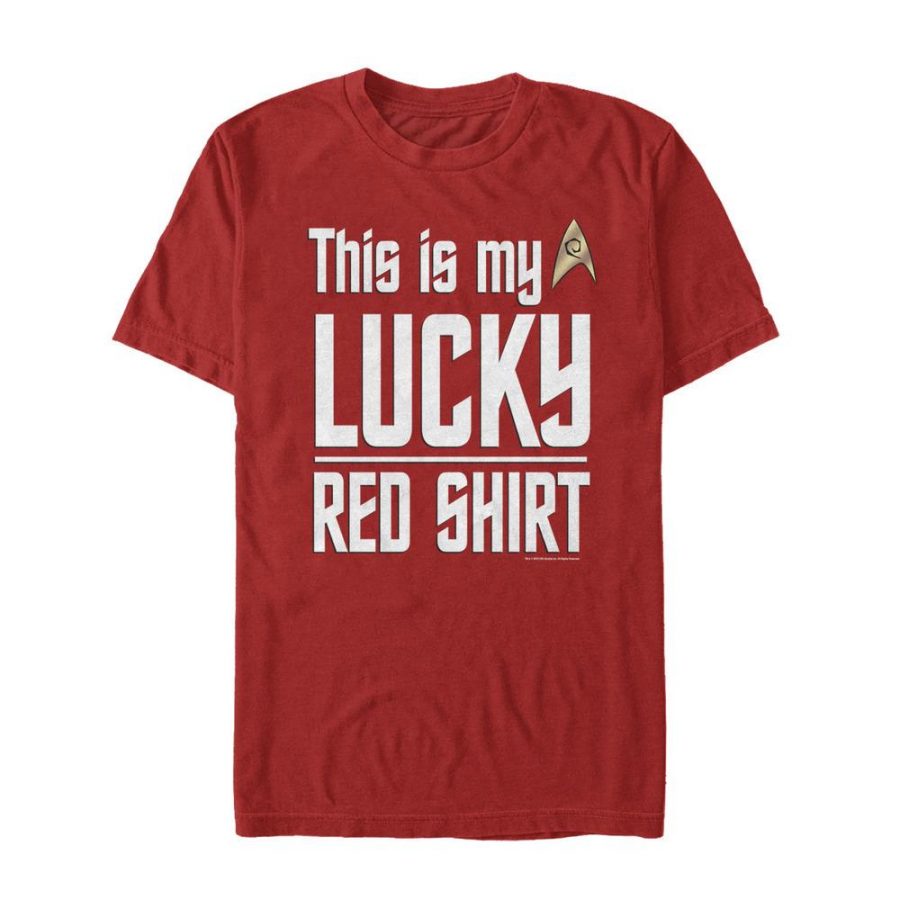
29. Star Trek Video Games
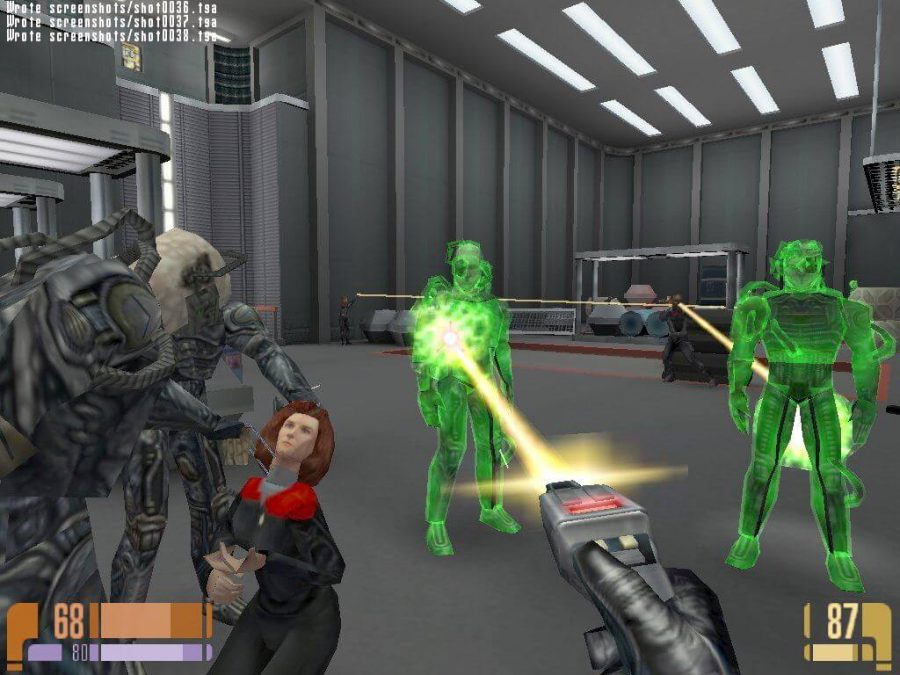
The world of Star Trek toys got off to a bad start and stayed bad for a long time. Star Trek video games have never been good, and they still aren’t, not at all.
A lot of people are playing Star Trek: Online, even though it’s mostly running around and resource collecting. Trust me; they’d be playing something better if it existed. It does not. Props to the incredibly talented people behind ST: Online for trying.
Many would agree the best Trek game ever produced was Star Trek: Elite Force which is a standard first-person shooter in which you run around Trek-themed places shooting Trek-themed stuff. That should seem strange since running around shooting stuff is not what Star Trek has ever been about. But in the video game world, that’s literally the best they could do.
Trek games have been unfaithful to the spirit of the franchise at best and unplayable at worst. There are a few which are an enjoyable way to spend a few hours, but almost none that fully delivers on the experience of sitting in a Captain’s chair and commanding a starship.
The closest the Trek world has ever come is the new VR game Star Trek: Bridge Commander. Most seem to agree it’s a step in the right direction, but VR isn’t quite ready for prime time yet, and the game itself has a ways to go. Still, I guess it’s progress in a realm that Trek has totally floundered in for far, far too long, especially given the incredible potential inherent in the franchise.
30. Star Trek Cruises
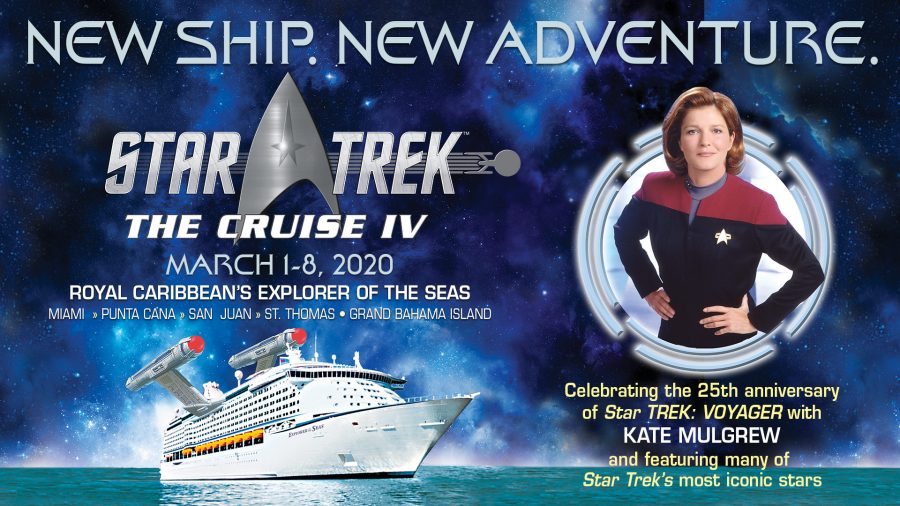
First, I’d like to say thank you to all the Star Trek actors who donate their time (for pay) to all the fans of the series by spending weeks with them trapped on a floating buffet. Also, if you’ve been on one of these floating buffets, I’d be happy to look at your photos and respond positively to your retelling of the “adventure”.
I’ll even go a step further here and say that if you’re taking a Star Trek cruise there is nothing wrong with you, and you are probably a cool person who I’d like to hang out with outside of a cruise (not on one obviously).
It’s the cruises that are the problem, not the people taking them.
Cruises are for eating and passing out drunk. Whether Robert Picardo is sitting next to me or not has no bearing at all on the quality of my experience. Why do I need him? What does being near enough to smell his pheromones actually do for me, except distract me from the cruise?
Mostly I feel embarrassed that talented people like Picardo have been forced to sell themselves as glorified floating bathroom attendants, doling out their mere presence as some sort of fan aphrodisiac.
I’m not saying these things aren’t fun… maybe they are for the right person. I’m not saying I’m against actors profiting endlessly off their past work… ok maybe I am. I am saying the mere fact that these exist is an embarrassing stain on Star Trek fandom, and I feel bad for everyone involved while wishing them well and hoping they don’t sink somewhere in the Bahamas because Robert Duncan McNeill does not actually know how to pilot a ship.
On second thought, if the ship did sink, you might end up getting CPR from Terry Farrell, and that’s a world I want to live in. I feel like she’d know exactly what to do in a crisis.
Star Trek Cruises that sink belong higher on this list, but for now, I’m only rating the ones that make it back to port. Successful cruises with a low death toll sit here, just outside the bottom tier of worst Star Trek mistakes, because, even at their worst, they still have margaritas.
And Now The Worst Things Star Trek Has Ever Done
You’re probably wondering why anyone would rank an actual Star Trek TV series below the infamously terrible string of failures that are Star Trek toys or the embarrassments that are Star Trek cruises. Easy answer: No matter how terrible some of the things listed above are, at least part of the time, they had good intentions. In addition to being overall terrible, nothing you’ll find below this line has ever had good intentions. Not once.
These final four items are the worst things Star Trek has ever done. A list of shame, a perfect confluence of ineptitude, carelessness, and bad intent. It’s a testament to how great some of the things are at the top of this list that Star Trek has managed to survive them all.
Cry havoc and let slip the dogs of war, fellow Trek friends, the following four abominations the worst things Star Trek has ever done…
31. Short Treks
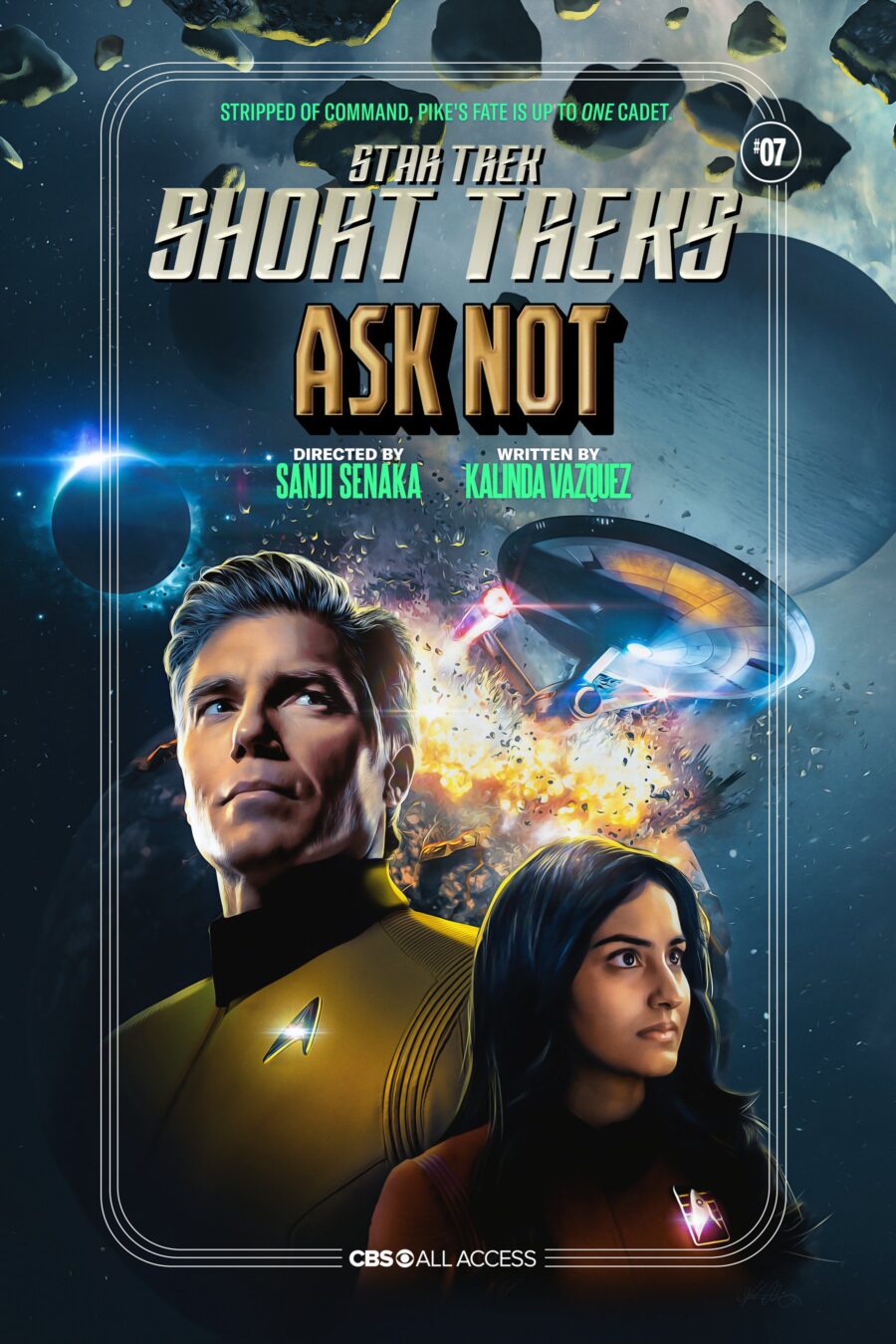
Star Trek: Short Treks are something CBS came up with to cheaply produce more content on their existing Star Trek: Discovery sets, thus maximizing their investment in building all those fancy blinking lights on the bridge.
The first few were hampered by truly bad scripts. I’m pretty sure “The Runaway” was written by Alex Kurtzman’s 7-year-old step-daughter (if he has one) and “The Brightest Star” was just a bunch of guys wandering around in rubber suits looking worried. Calypso was the best of the first run, and it did the job of foreshadowing the plot of Star Trek: Discovery but most of the plot doesn’t make a ton of sense if you stop and think about it.
The first really great Short Trek was The Escape Artist, directed by and starring Rainn Wilson as Harry Mudd. Given Dwight’s level of involvement, I’m tempted to give all the credit for making that one work to him.
The Escape Artist is still the anthology series’ high water mark, but Short Treks failed to build on that success. They did, however, manage to crank out a couple of other tolerable shorts. That one where Edward tries to make everyone eat tribbles, despite not fitting in with the established tribble cannon was a lot of fun. Spock had some good questions in “Q&A”, even if questions is all he had. “Ask Not” was so short it was almost too short, but it had Anson Mount playing Captain Pike in it, and that’s always worth a watch.
Short Treks even dabbled in all-animated episodes. Those, like everything else Short Treks does, have been a mixed bag. The first two animated Short Treks released were “Ephraim and Dot” and “The Girl Who Made The Stars”. “Ephraim and Dot” is a fun, Looney Tunes-style adventure through all the original Enterprise’s greatest moments. “The Girl Who Made The Stars” is a bad folk tale which has nothing to do with Star Trek and isn’t worth viewing. One good, one bad, so they cancel each other out and have no effect on this ranking.
The best thing all these shorts have going for them so far is production value, but that production value is a leftover byproduct of what they’ve already done for Discovery and more recently Star Trek: Picard, so I’m not sure they deserve any credit for it. At least they’re short.
32. Very Short Treks
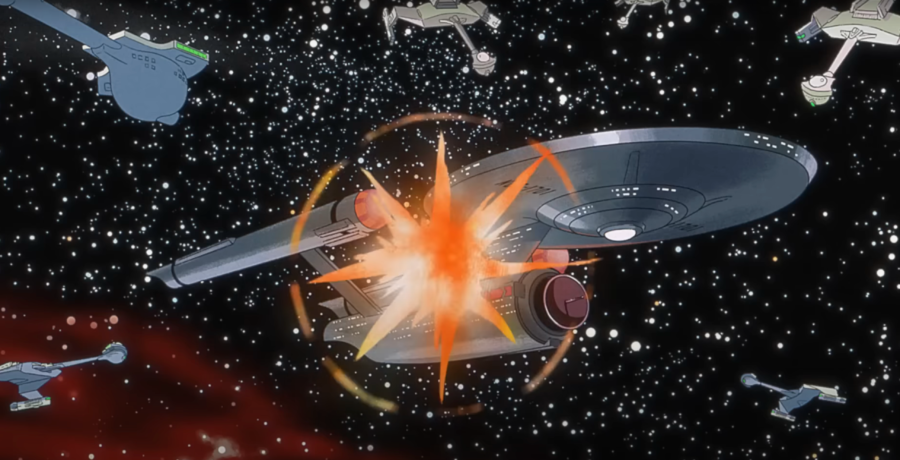
Not to be confused with Short Treks, Very Short Treks are a series of comedy bits animated in the style of Star Trek: The Animated Series and released by Paramount on YouTube.
As of this writing, only the first three, “Skin A Cat,” “Holiday Party,” and “The Worst Contact”, have aired . This ranking will be in flux until the final episode of Very Short Treks airs.
So far the best thing about Very Short Treks is that they are, well, short. Also, the retro animation is a lot of fun. Everything else is nightmare fuel and feels as though it was made by people who hate Star Trek and want to destroy it.
The first episode replaced Captain Kirk with comedian Pete Holmes and revolved around a single joke that could have been stuck into any franchise and really wasn’t that Star Trek-specific.
The second episode, titled “Holiday Party”, did better by using existing characteristics of Trek characters to find humor in the absurdity of Spock’s inability to understand humor. It’s not entirely awful (thought too gruesome).
The third one is literally, no hyperbole here, the most disgusting thing Star Trek has ever done. It’s a stain on the franchise that will never go away.
It’s hard to believe these are actually produced by Paramount for Star Trek on purpose. They seem more like a Digital Short produced by Saturday Night Live to make fun of the franchise for people who don’t know much about it and aren’t actually interested in it.
33. Star Trek: Picard Seasons 1 & 2
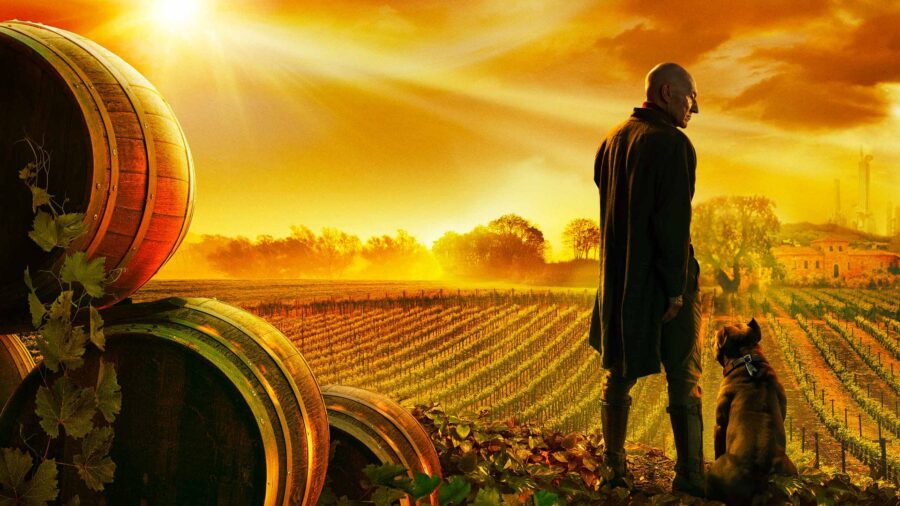
In season 3 Star Trek: Picard became a completely different show run by totally different people. It’s so different it bears no resemblance at all to the show’s first two seasons. Thus, I’m ranking them separately.
Star Trek: Picard’s first two seasons weren’t a television show; they were a death cult. It’s where CBS sends all your favorite characters to die in the service of bad writers who can’t come up with anything better to get ratings. After fans suffered through the ignominious death of Data in Star Trek: Nemesis, season one of the series revolved around killing him again, only this time, they had him give up on life and commit suicide.
In season two, they killed off most of the Star Trek: Picard season 2 cast and also killed off a beloved character who was supposed to be immortal in Q. Why did Q die? They never bother to address it. But they were certain that the hug Picard gave him at the end was bound to elicit tears.
While they only sort of killed off Jean-Luc Picard in the show’s first two seasons, they might as well have gone all the way with it. The prim, proper, stoic captain obsessed with posture and wearing a crisp uniform was turned into a doddering elderly fellow who stands around with his hands in his pockets and moans a lot about his mommy. The real Captain Picard would rather be dead than stand around slouching with his hands in his pockets. The dried-up husk of a not-robot bearing his name in this show is absolutely nothing like him.
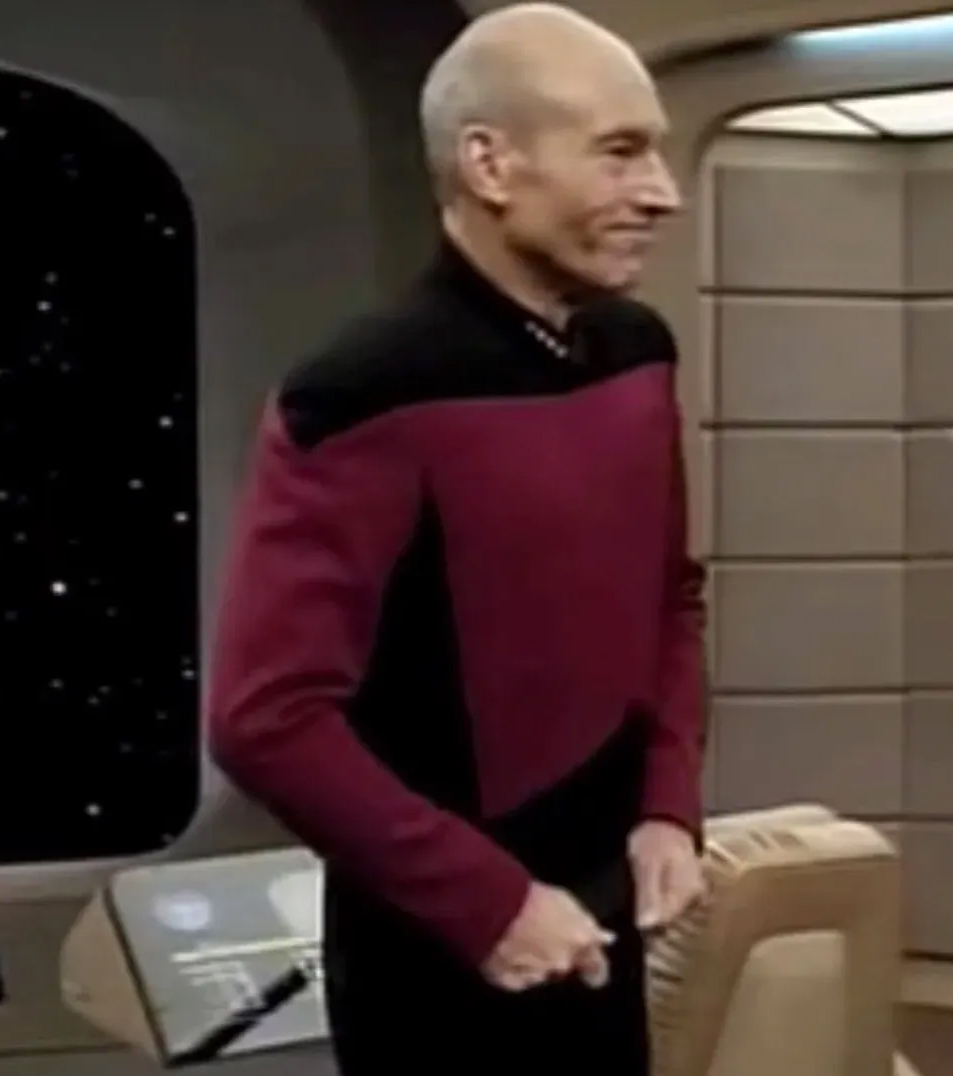
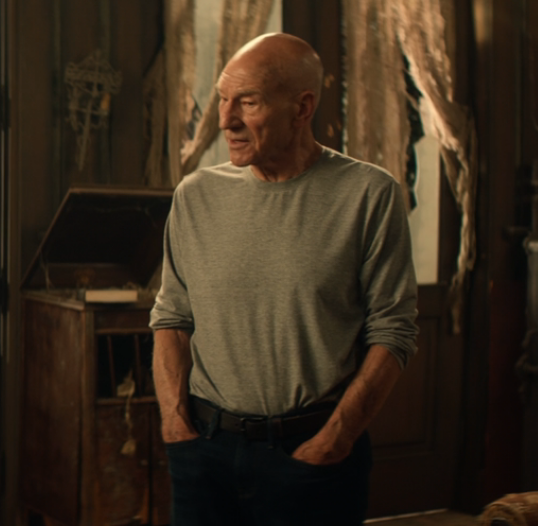
Star Trek: Picard season 1 was a disaster. It was so bad the series ended up ranked by fans as the worst small-screen program Star Trek has ever produced. In my review of the finale I accused Picard of lacking imagination, and that’s true. But coming up with imaginative plot lines is hard. Paying attention to the little details that make something Star Trek instead of any generic sci-fi franchise is easy, and Picard didn’t bother to do any of that, either.
Even if you liked the story of Star Trek: Picard’s first season, it’s undeniable that the production looked and felt cheap. In theory, this is the most expensive piece of television Star Trek has ever produced, but in practice, when they needed a fleet of ships, they made a really low-res model and then copy/pasted it two hundred times so they wouldn’t have to spend any money on good CGI. And it showed.
In season two, they saved money by sending the cast back in time to the present. They then proceeded to shoot all their scenes in a couple of alleys and a doctor’s office. They turned an already low-production value show into a show that takes place next to a dumpster. It’s not even a space dumpster.
Star Trek: Picard’s first two seasons are cheap and full of plot holes that make no sense. It’s a clear cash-in that destroys the past and everything everyone loved about Star Trek: The Next Generation purely to give Patrick Stewart a big paycheck.
34. Star Trek Into Darkness
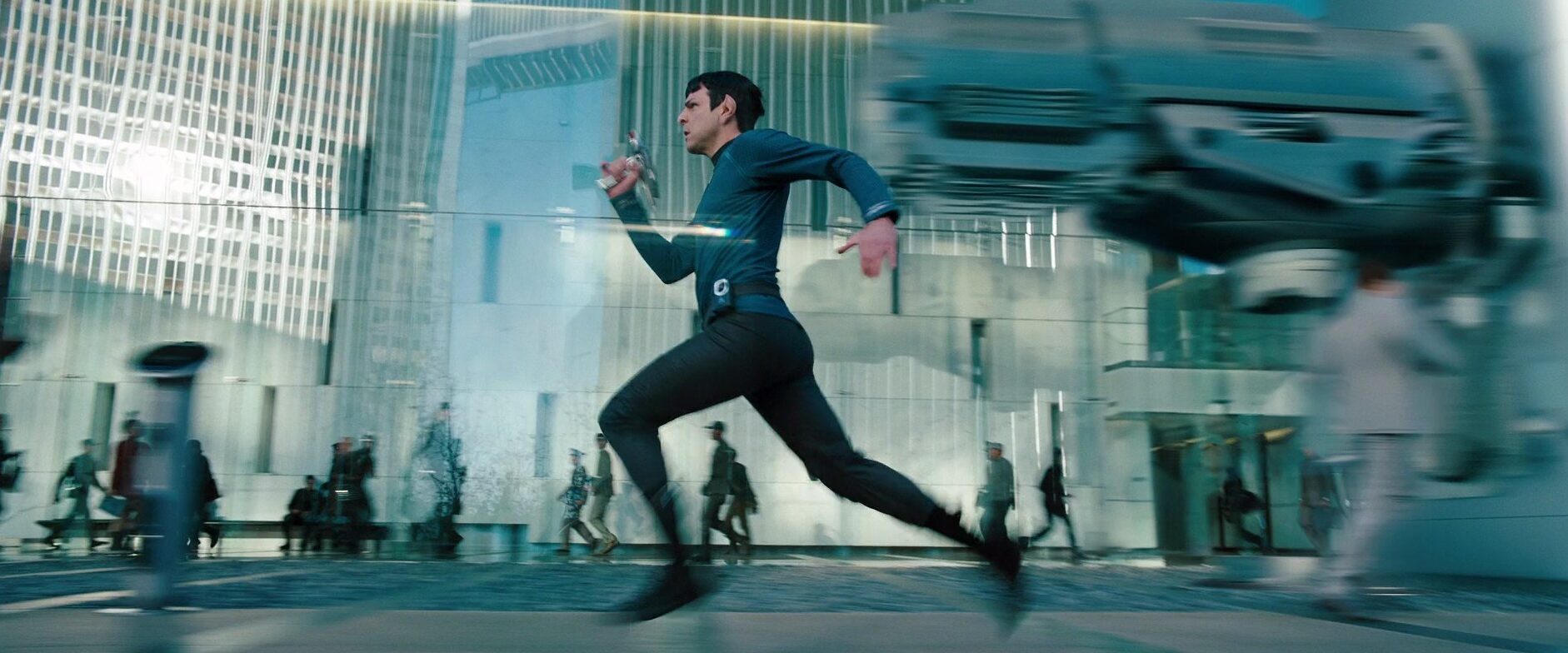
Coming in second to last on this definitive Star Trek ranking is the thing that is, without a doubt, the worst movie ever produced with the name Star Trek. It’s the stealth-remake Star Trek: Into Darkness, in which writers Alex Kurtzman and Damon Lindelof photocopied all the pages from the Star Trek II: Wrath of Khan script, then threw away the best parts, shuffled the remaining lines to different characters, added unnecessary punching scenes, and filmed it.
Anyone watching this film has to admit Star Trek Into Darkness never really set out to be good in the first place. Their goal here was to elicit a feeling of nostalgia for something better you’d seen before and remembered. Instead of making something good, they reminded everyone of how good Star Trek can be by showing them what it’s like when it’s not.
I guess Lindelof thought it would be more exciting if all the problems encountered by their characters were solved by lots of shooting and magic space blood instead of by sacrifice and death and horror.
35. Star Trek: Discovery
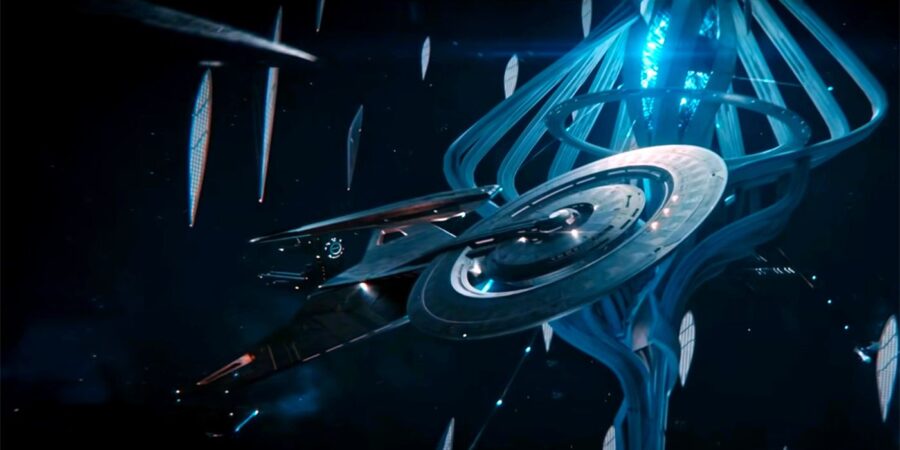
CBS’ attempt to pump up its streaming service by bringing Star Trek back to television launched with lofty ambitions on September 24, 2017. They spared no expense and delivered top-notch casting and fantastic production design for the first season. Unfortunately, they forgot to hire people who could write decent scripts.
In subsequent seasons the scripts have remained terrible, but the production budget has plummeted. The show has become not only badly written but badly produced, with most external scenes which might require special effects taking place hidden behind some inexplicable interstellar fog or, worse, happening entirely off-camera. “Captain the USS Voyager-J is attacking!” (Voyager is not shown).
The show is inexplicably focused on a second-rate commander who mutinies against her captain and then redeems herself only to run around threatening to mutiny again (though for good reasons this time, really!). That commander, Michael Burnham, mutinied so hard and so often that now she’s a Captain. The plot holes are huge, and the stories are poorly thought out most of the time, with a few notable exceptions, like any time Harry Mudd shows up on screen.
Huge mistakes in writing are regularly papered over by having characters high-five and shout, “I like science!” while doing nothing science-like at all. It’s almost as if they’re thumbing their noses at us. While season three attempted to correct some of this, it never really got all the way there, and the production value of the show declined almost in concert with their attempts to improve the scripts.
Still, Discovery’s second-season Captain was Christopher Pike played by Anson Mount. He’s a Captain so good he belongs right up there on the Star Trek Mount Rushmore alongside Kirk, Picard, and Sisko. Doug Jones brings a new alien character to life in a way we haven’t seen since Worf. Anthony Rapp was initially solid as the geeky and cranky scientist/engineer Paul Stamets, but as they’ve softened him, he’s become just another whiny space-bore. Most of the rest of the cast is not important outside of Michael Burnham, played woodenly enough by Sonequa Martin-Green.
I choose to believe they made this movie terrible on purpose. Accidents this bad don’t just happen.
The show was canceled after five seasons. In Season 5, the scripts had slightly fewer plot holes, and they introduced a new, curmudgeonly first officer character who stole scenes. Those improvements were offset by the show’s sudden obsession with characters thanking each other.
Now that the show is done, we can say with absolute certainty that Star Trek: Discovery is the worst thing Star Trek has ever done. The sooner it’s forgotten the better off Trekkies will be.
We aren’t done ranking Star Trek, of course. When there’s money to be made, there’s always something lurking on the horizon. See you back here when the next new Star Trek thing is released or when someone finally builds an awesome Star Trek Hotel.










